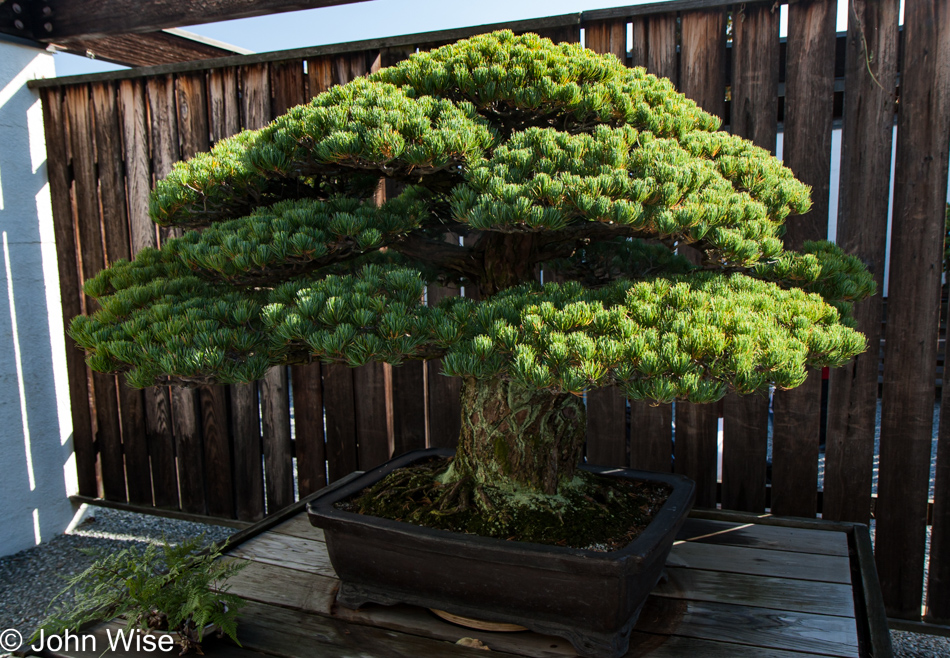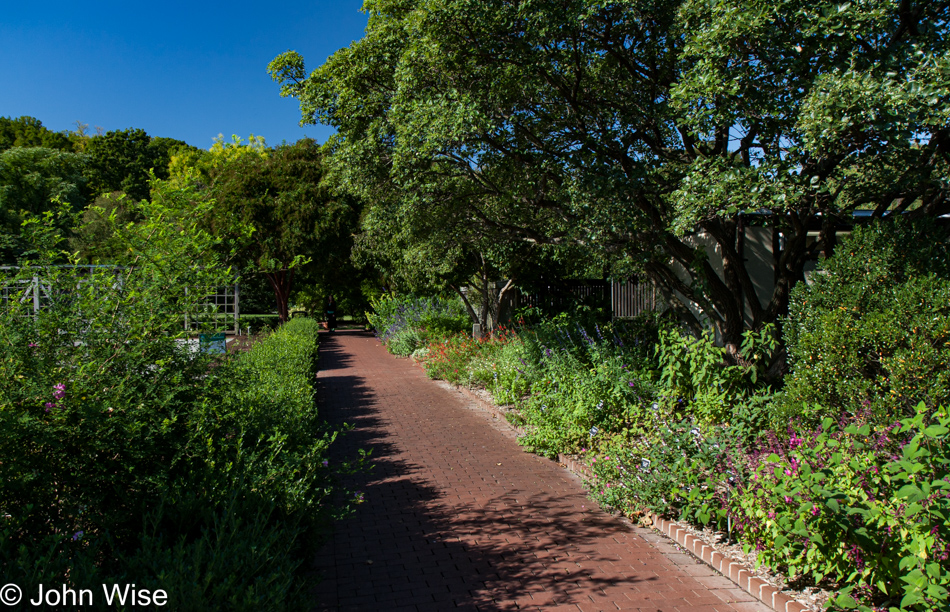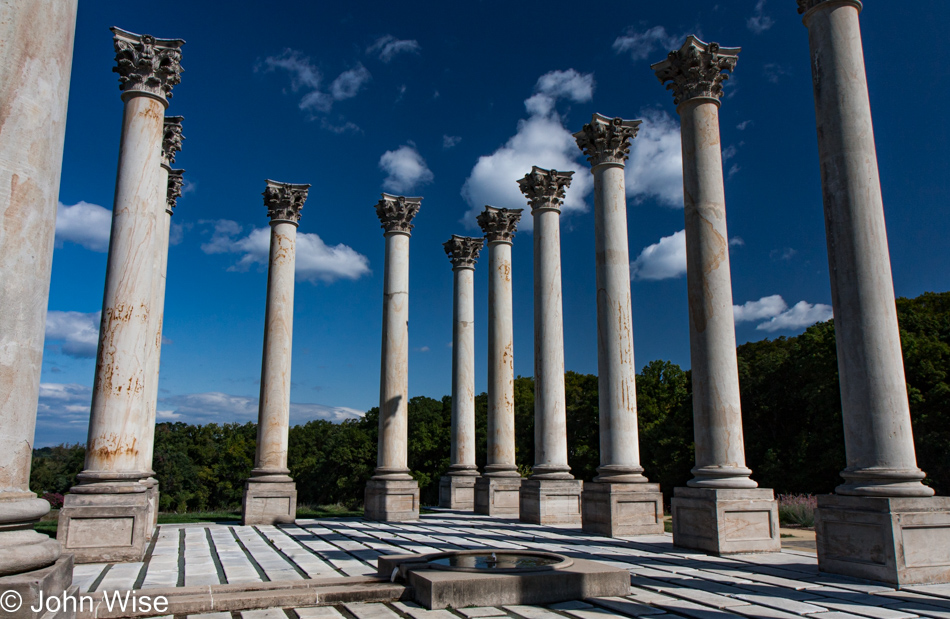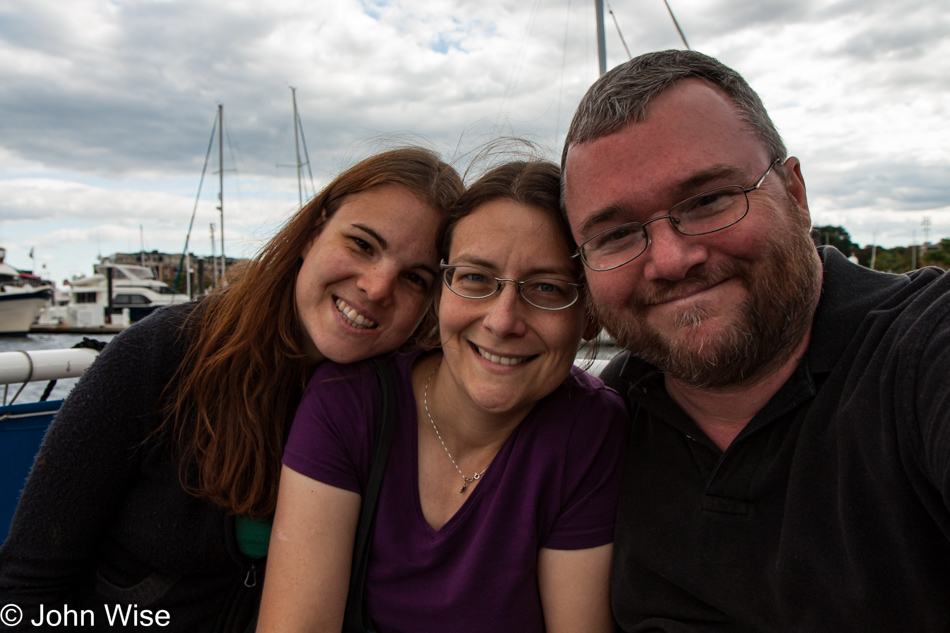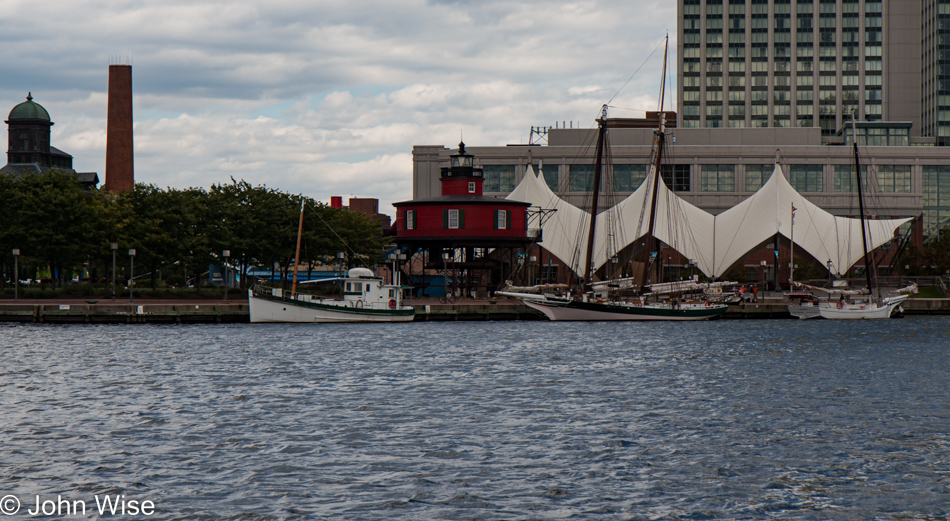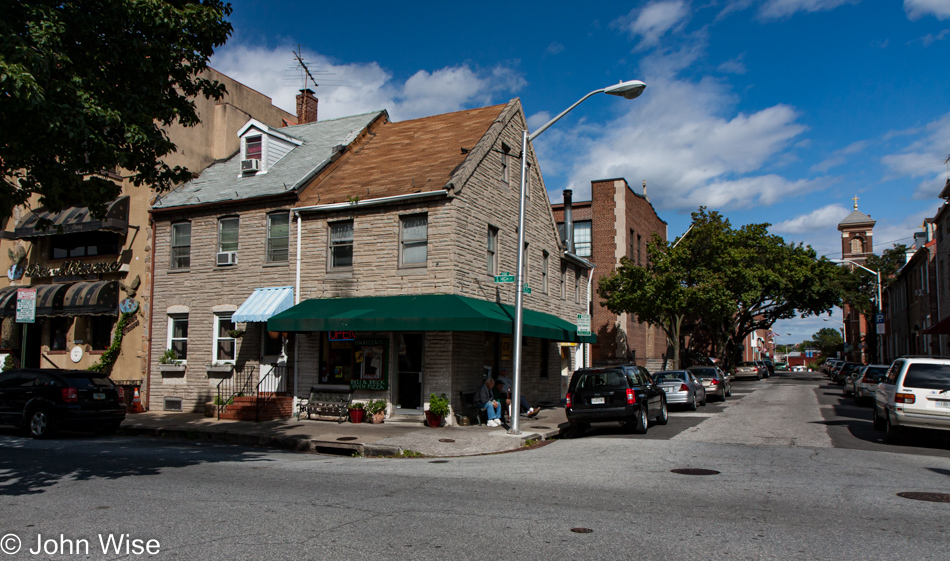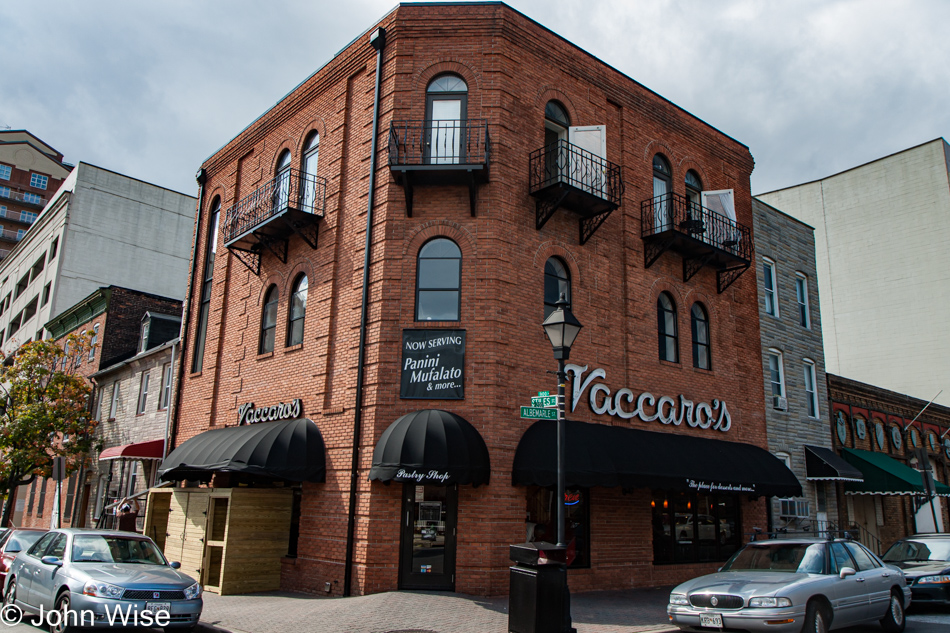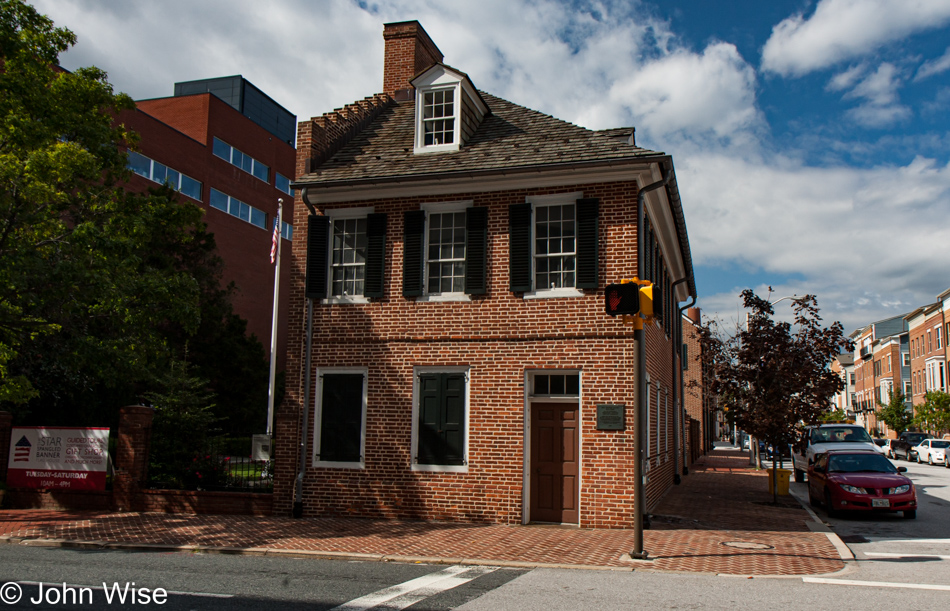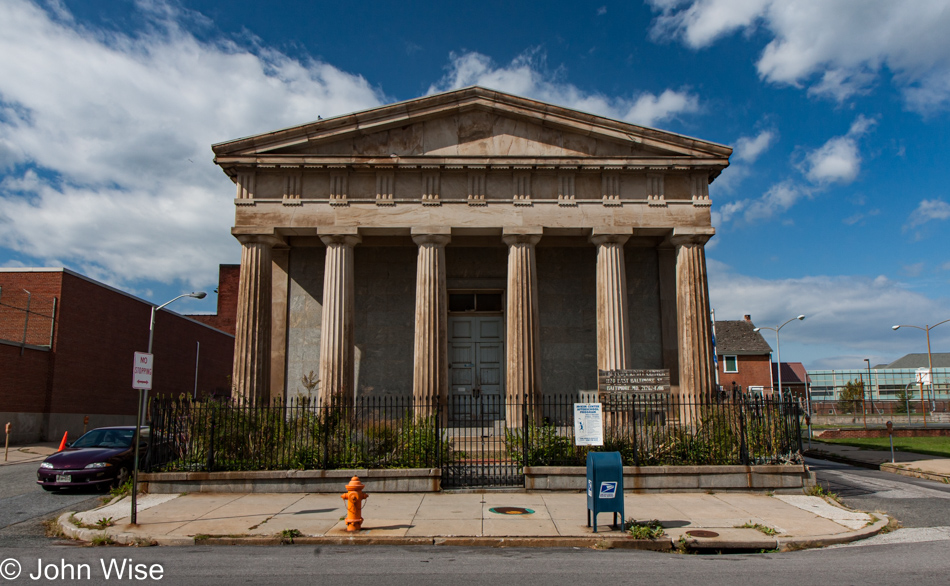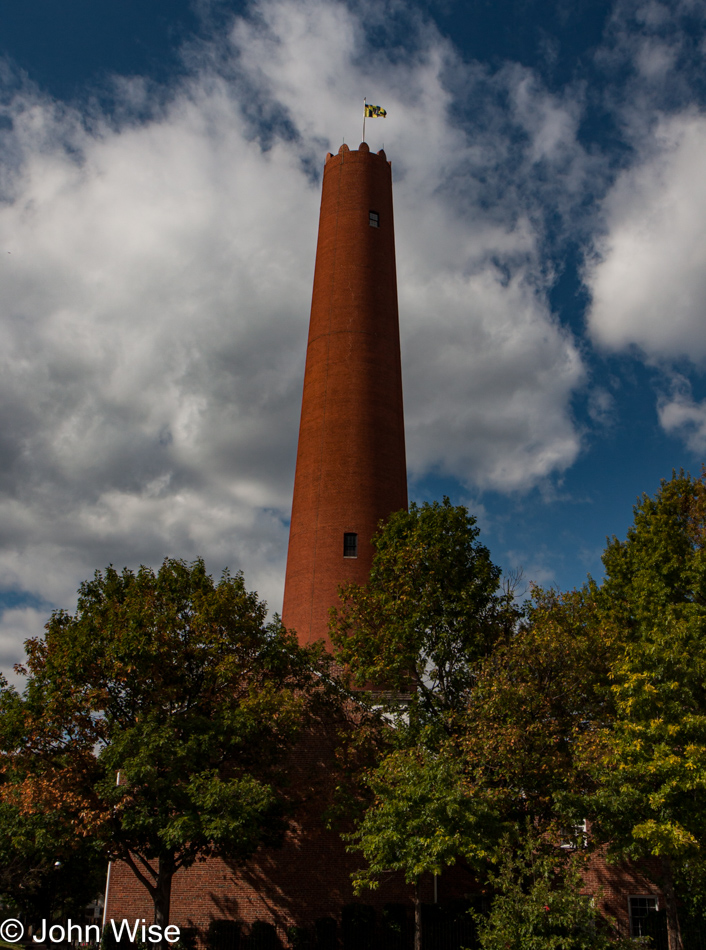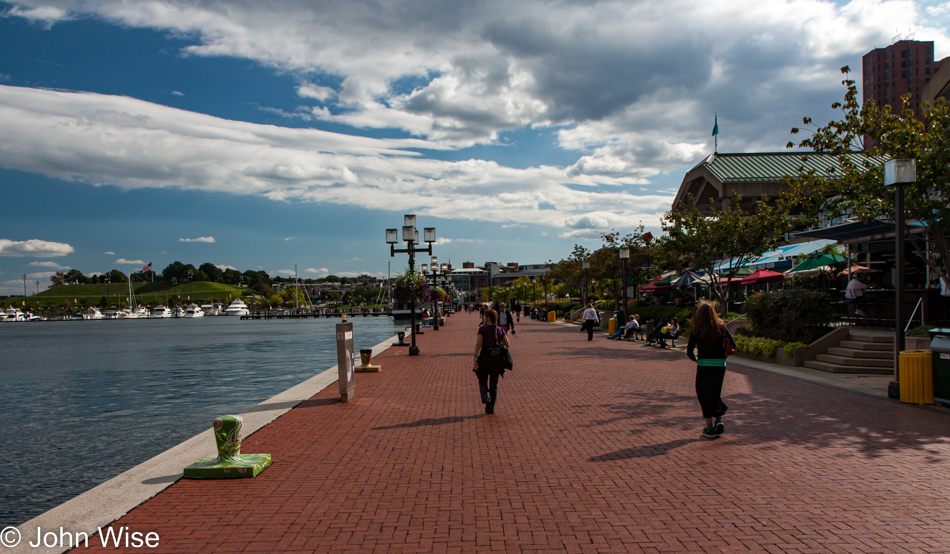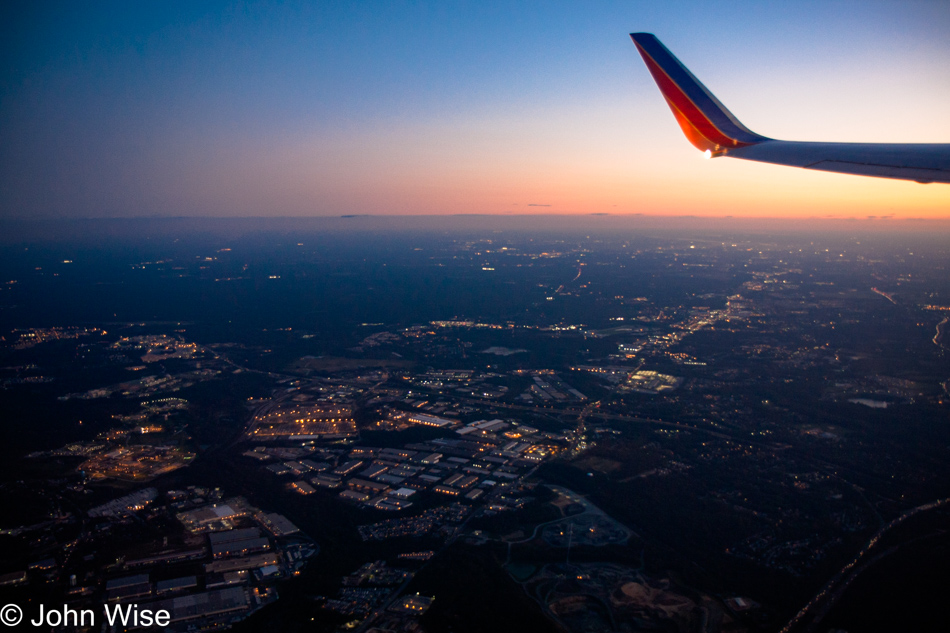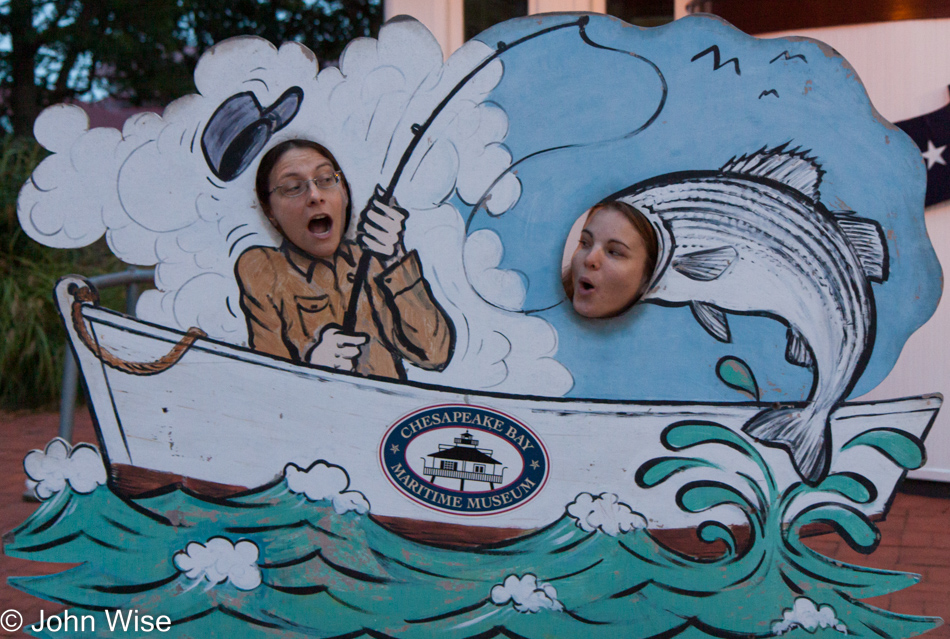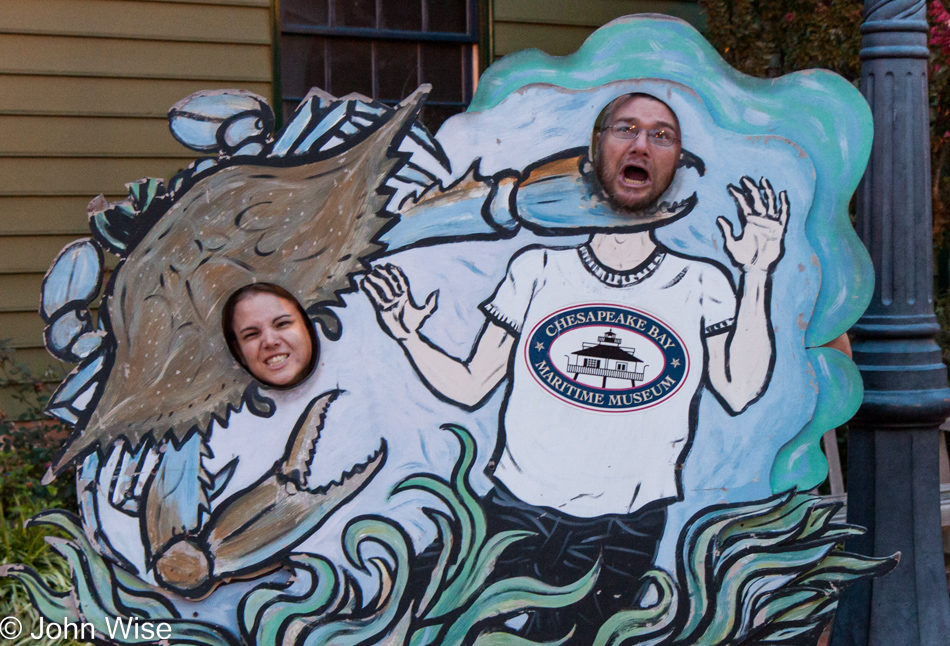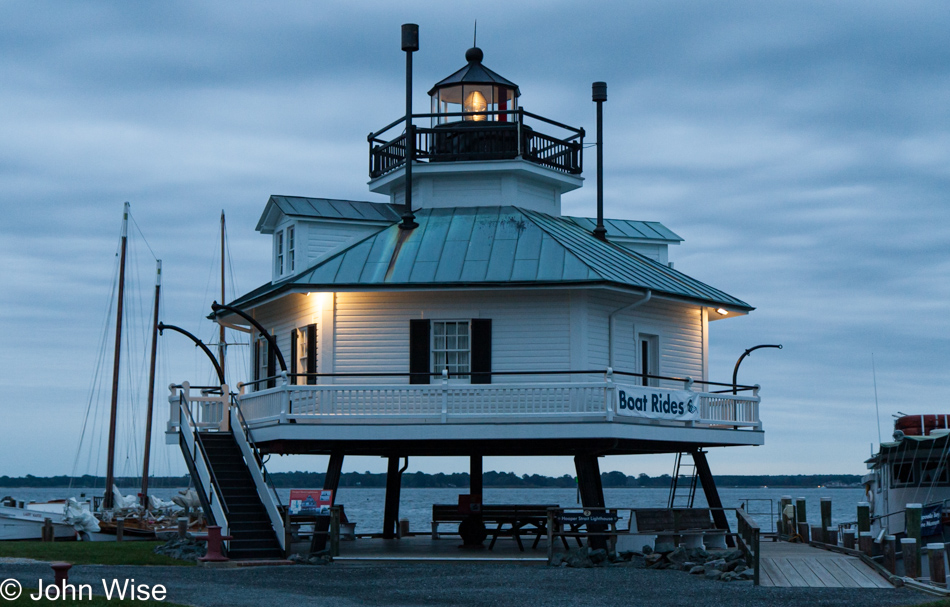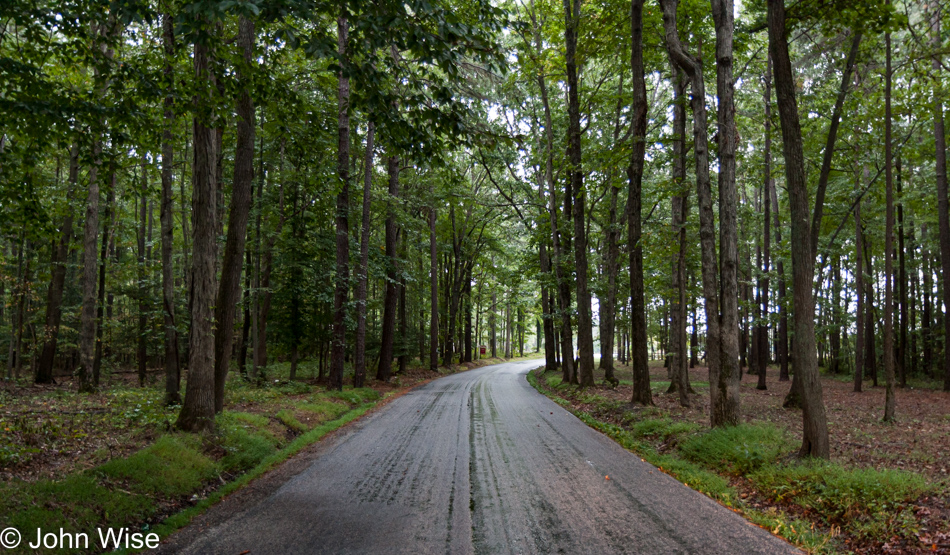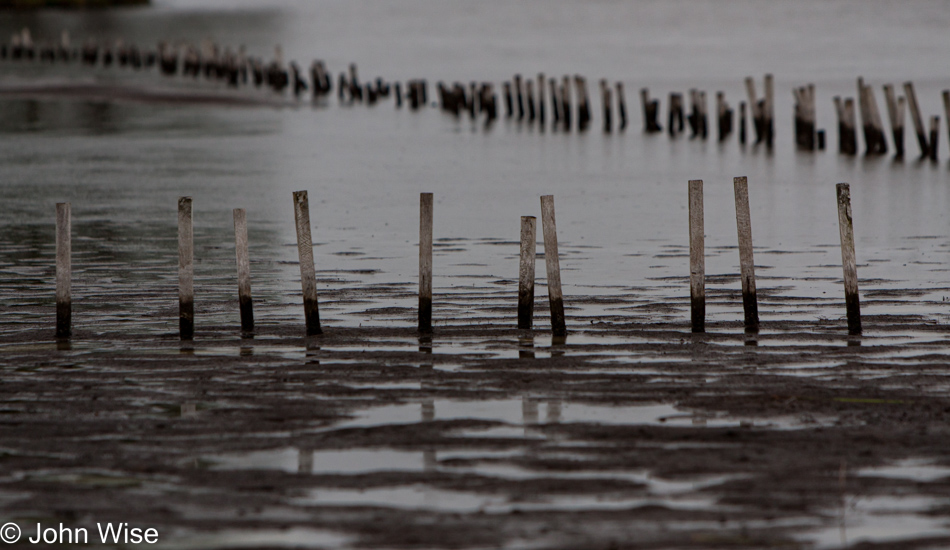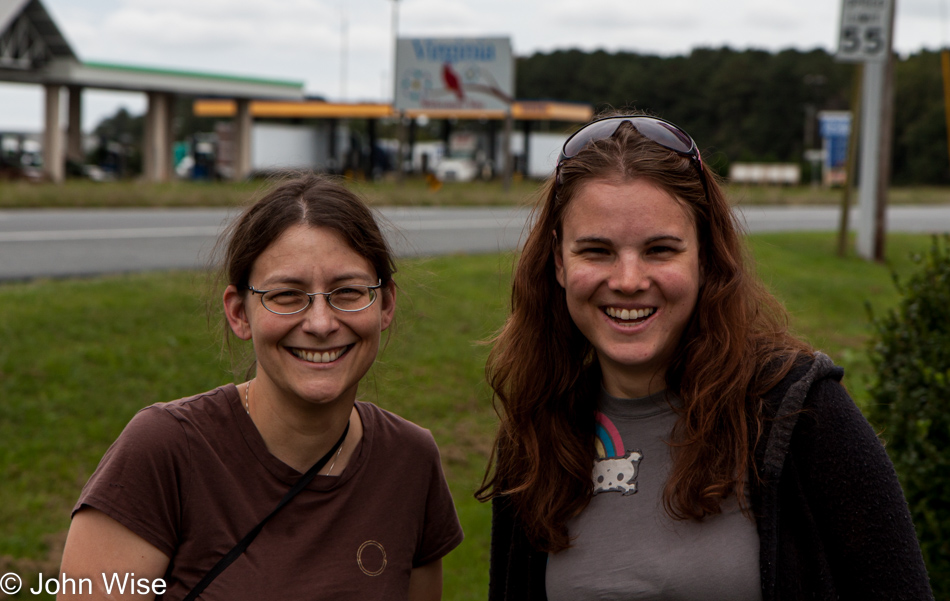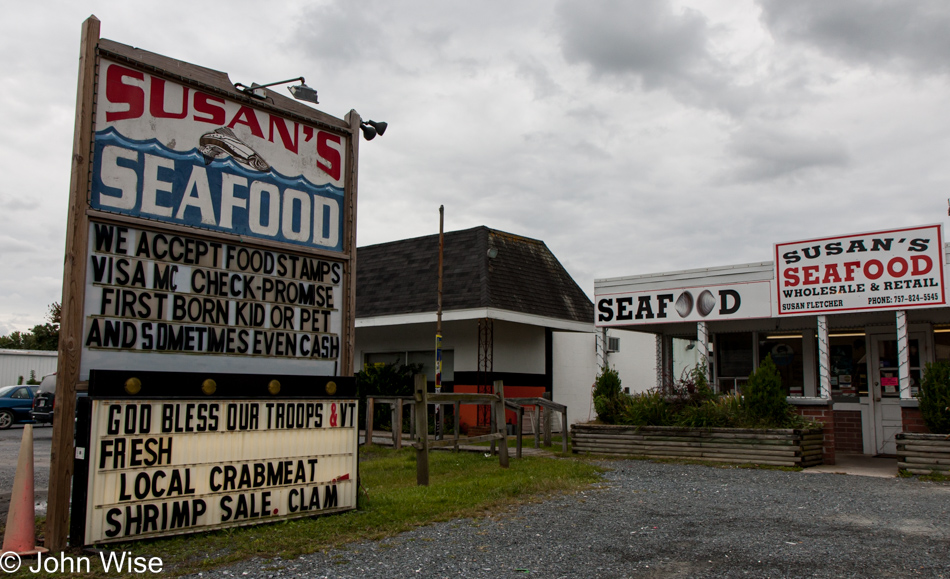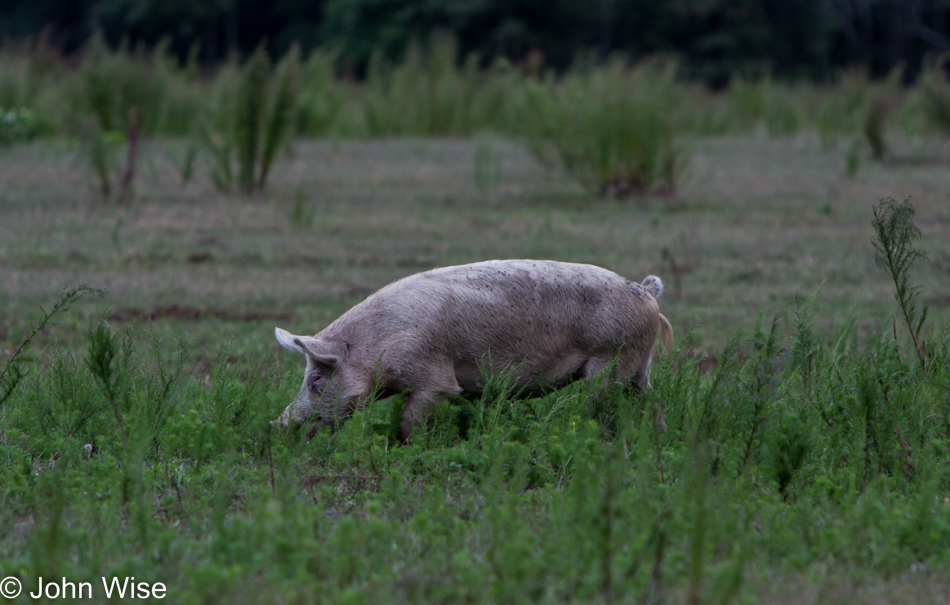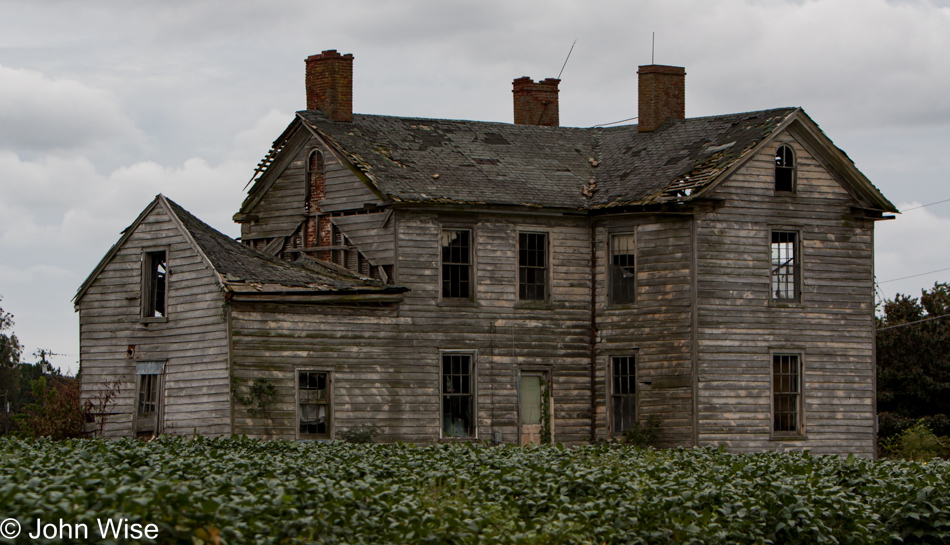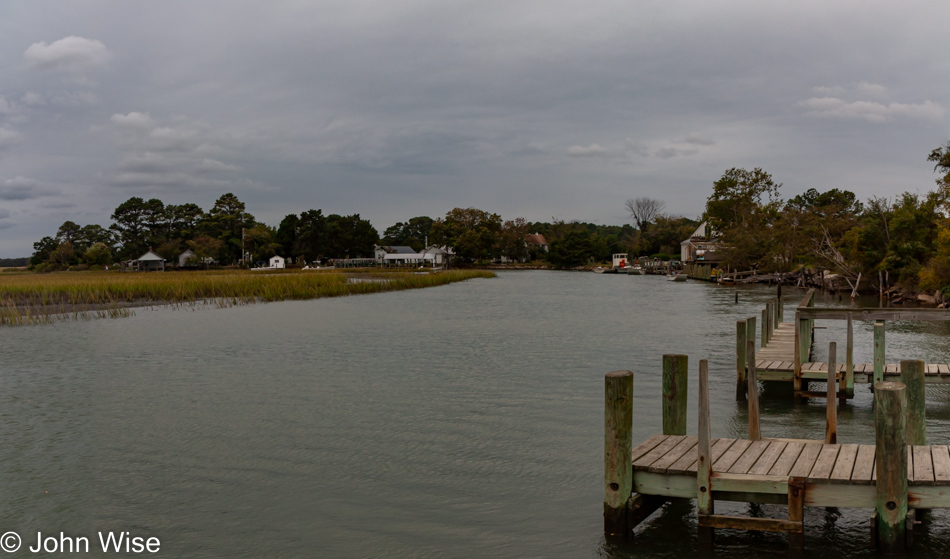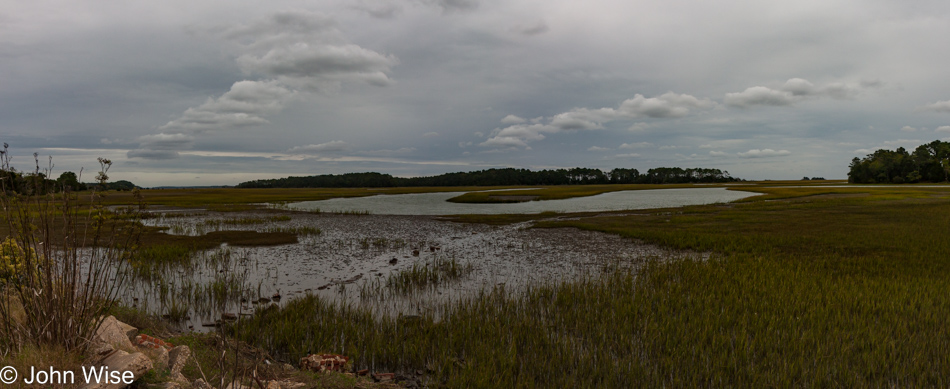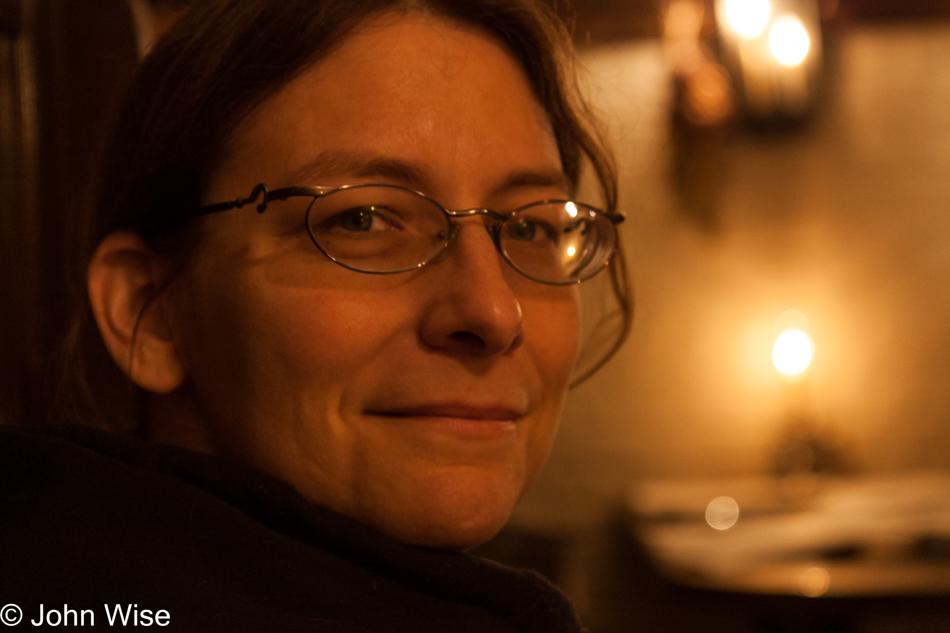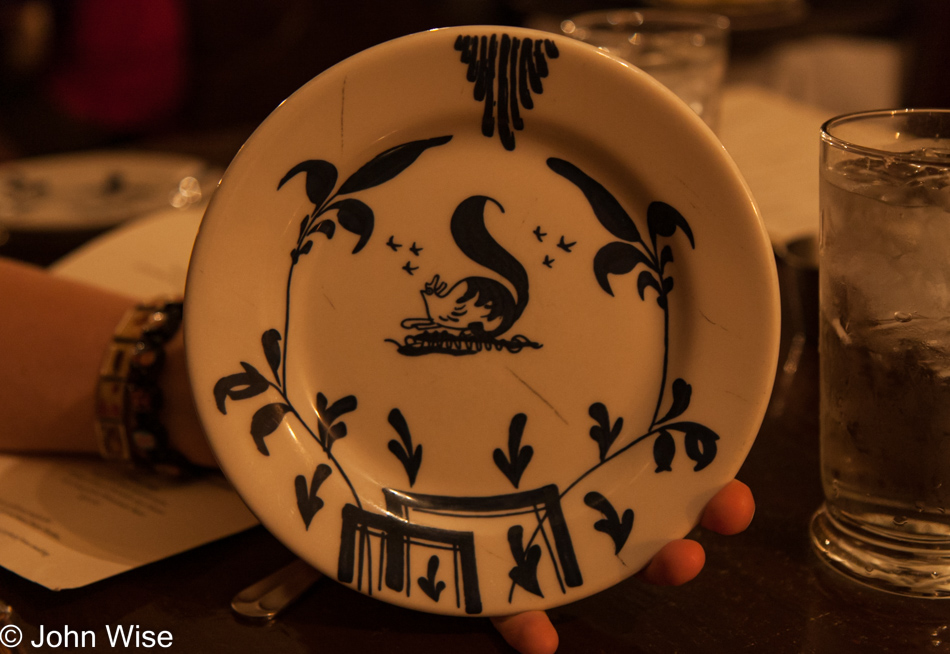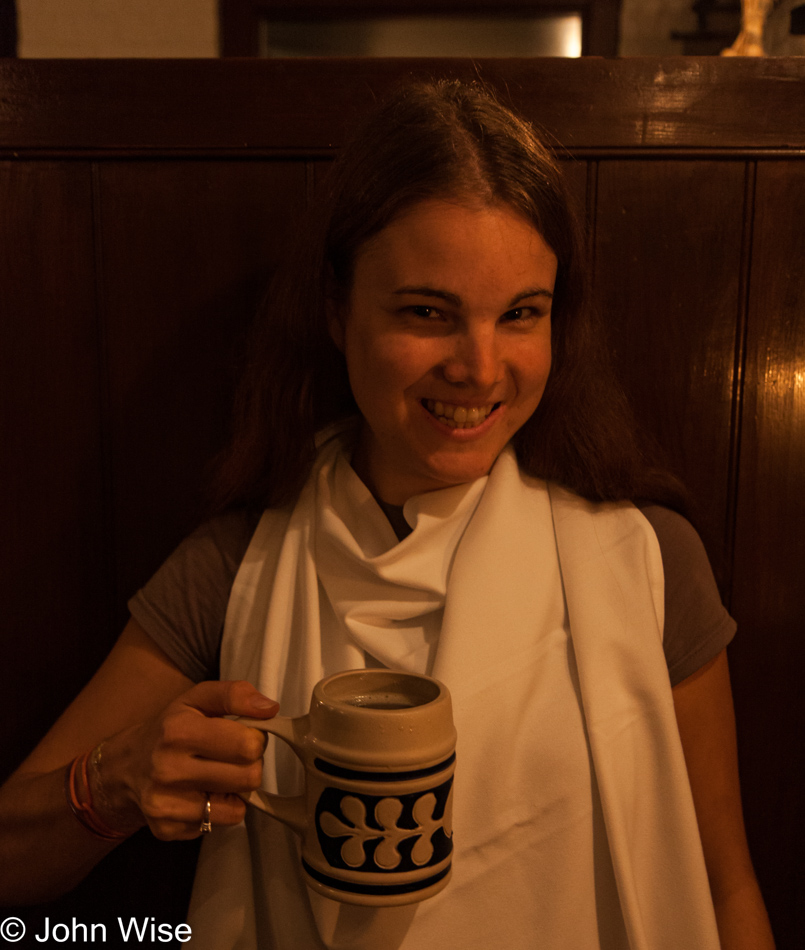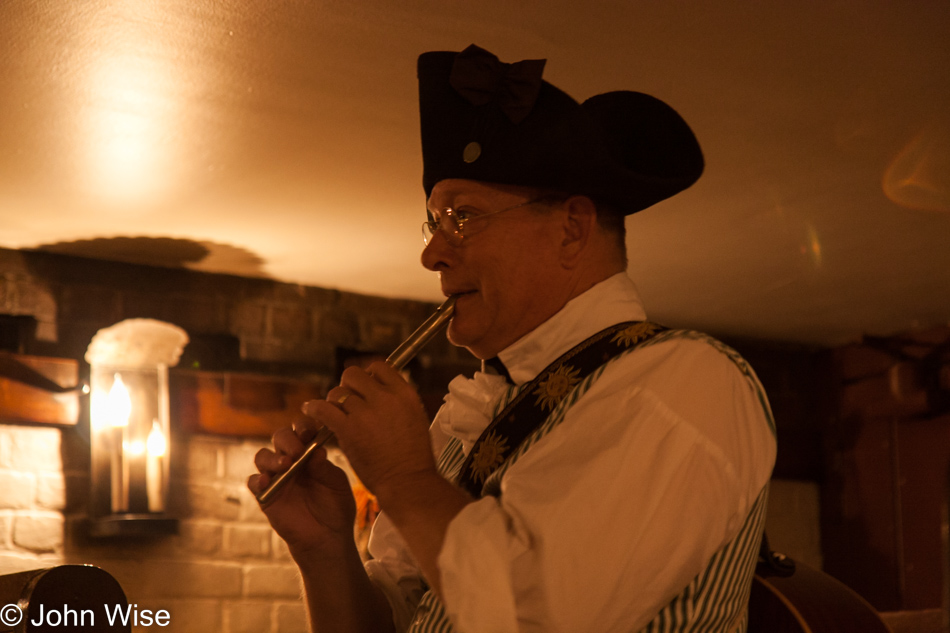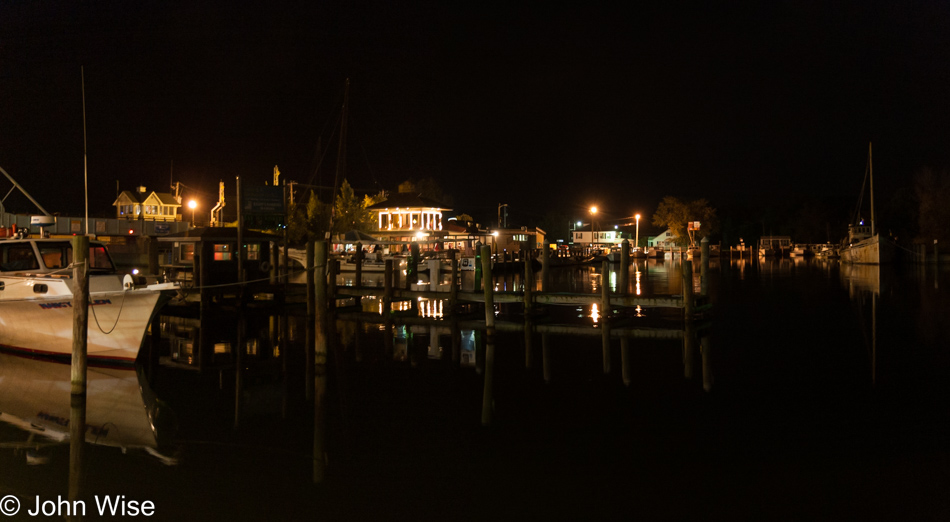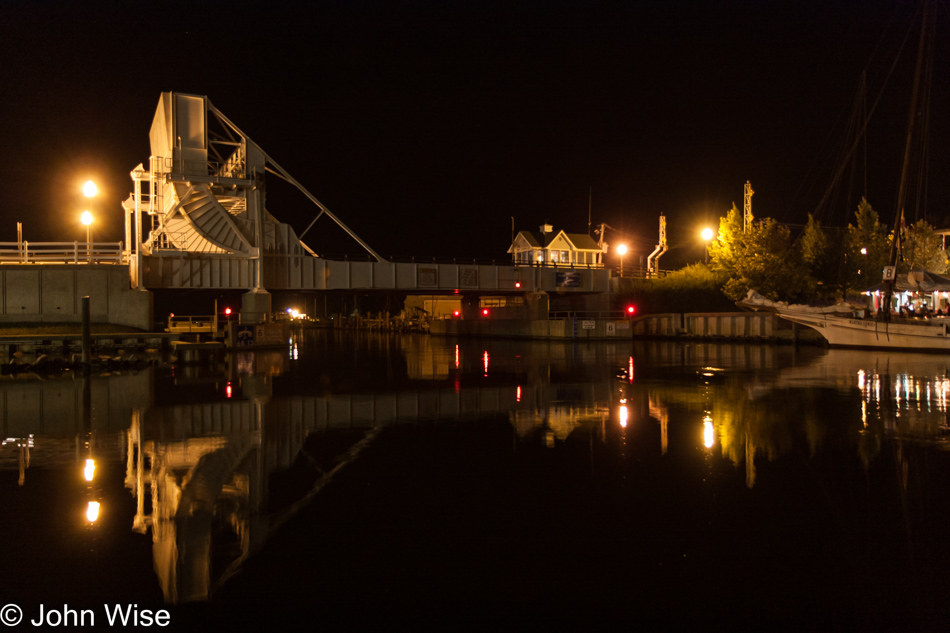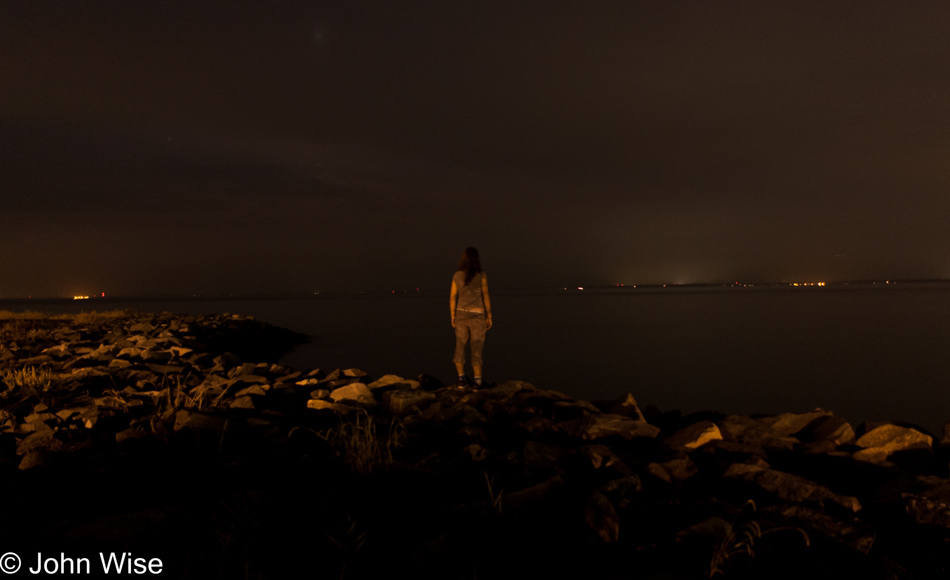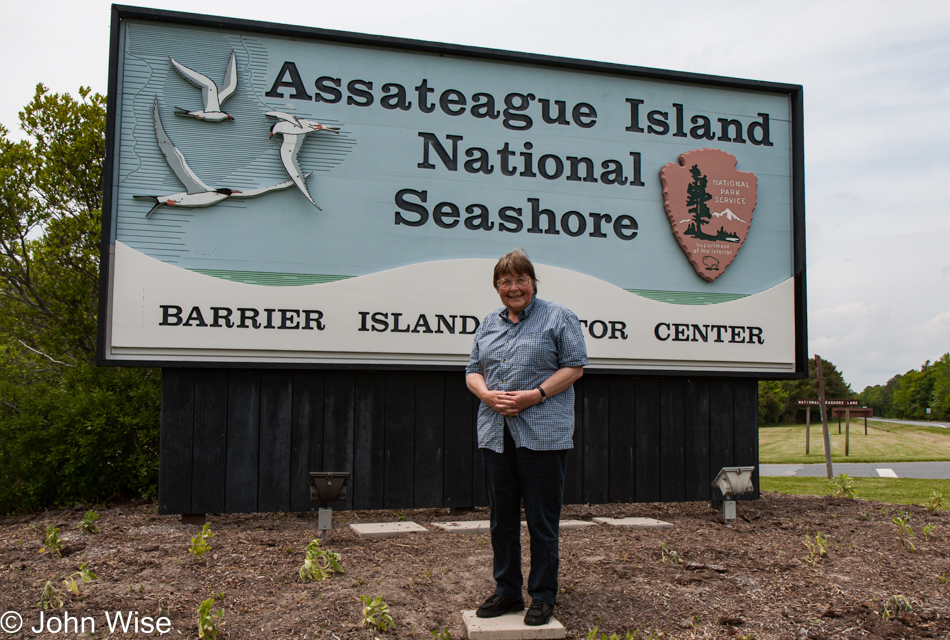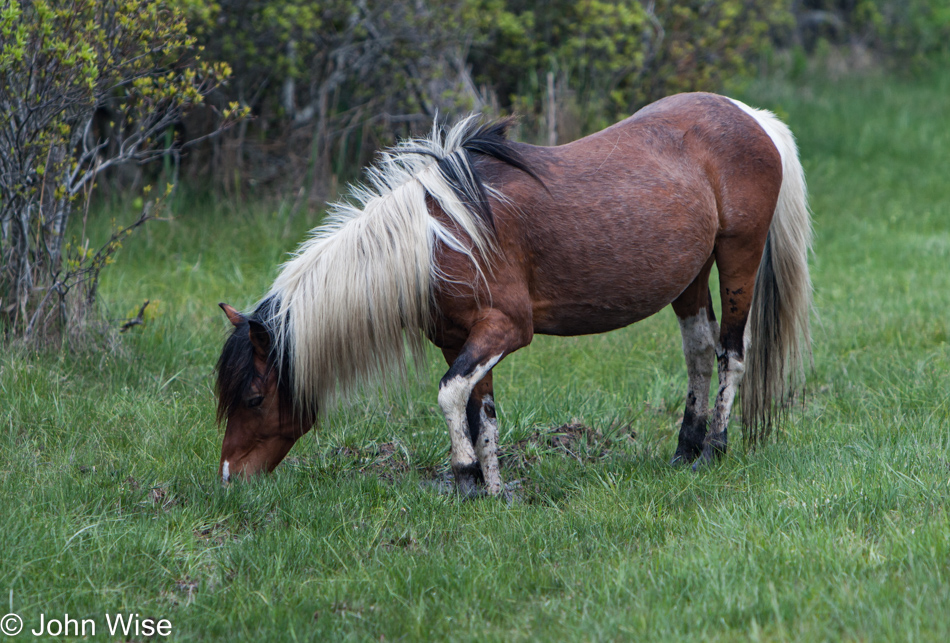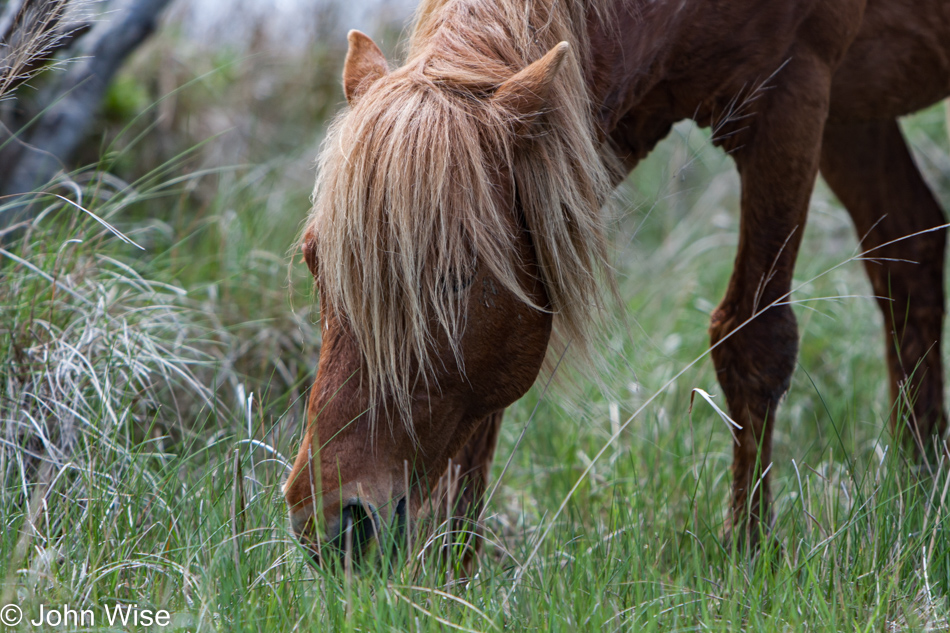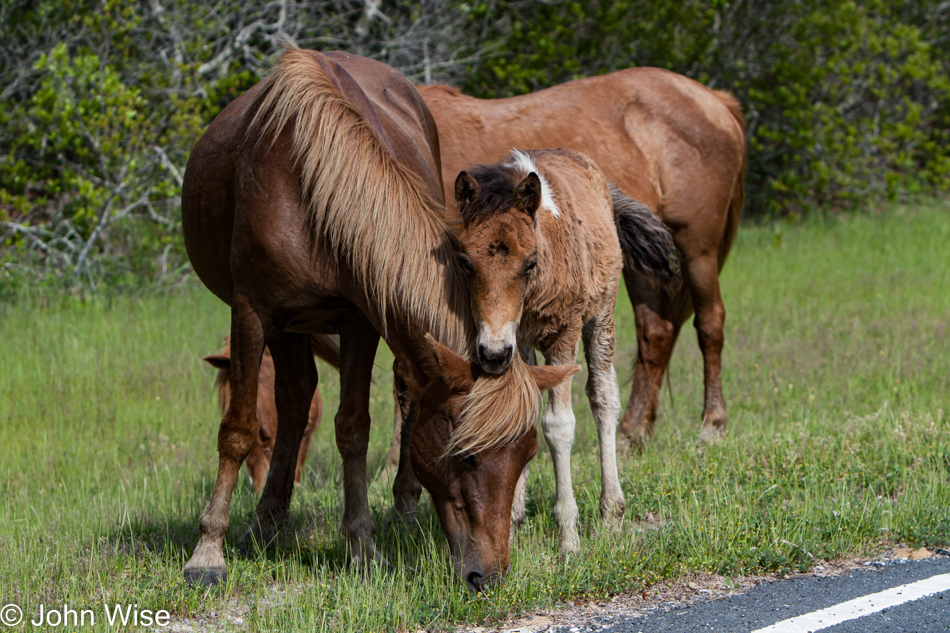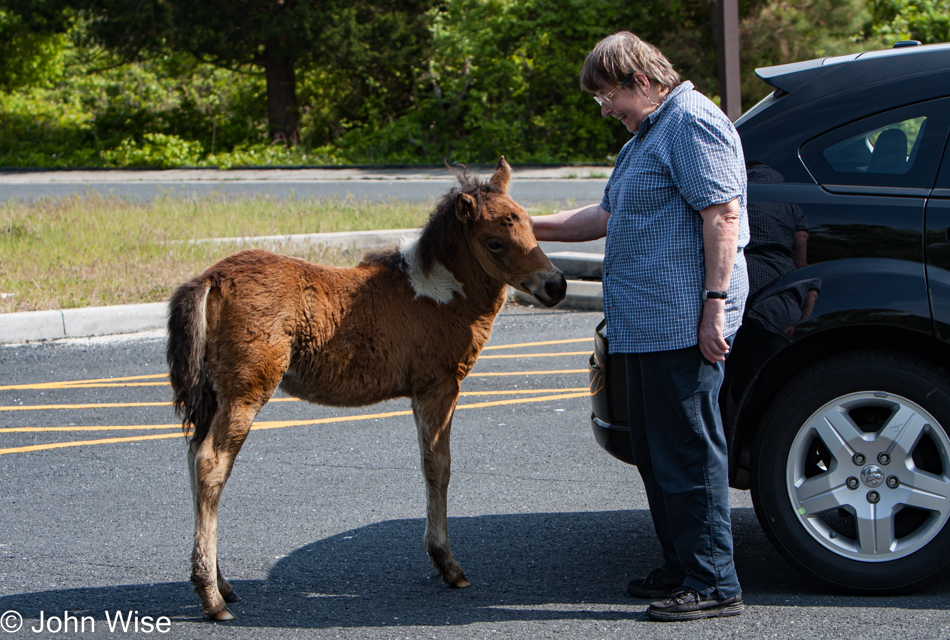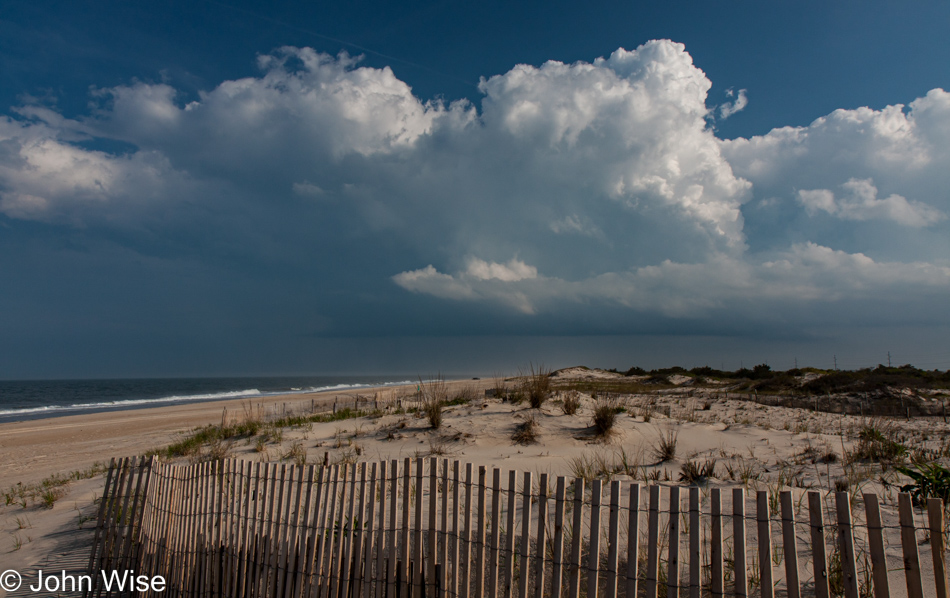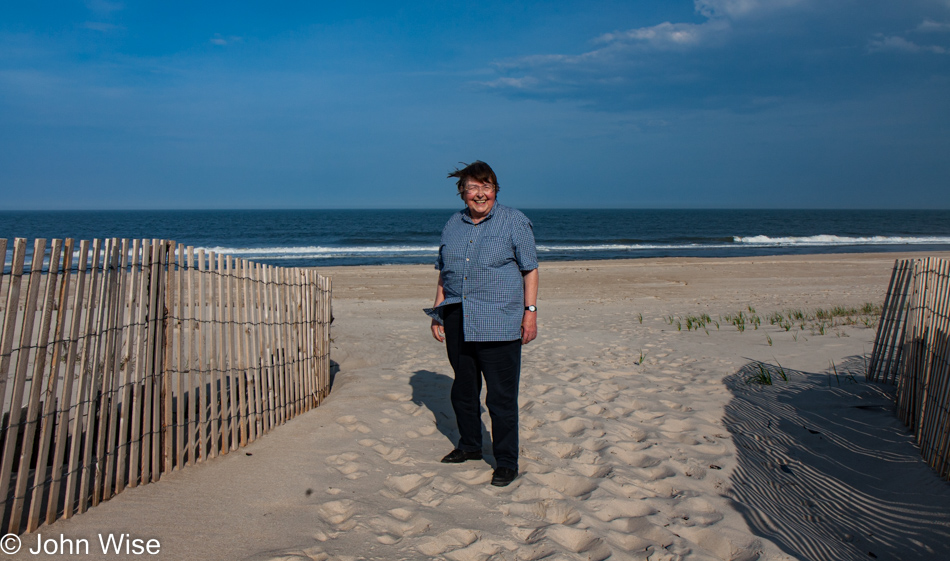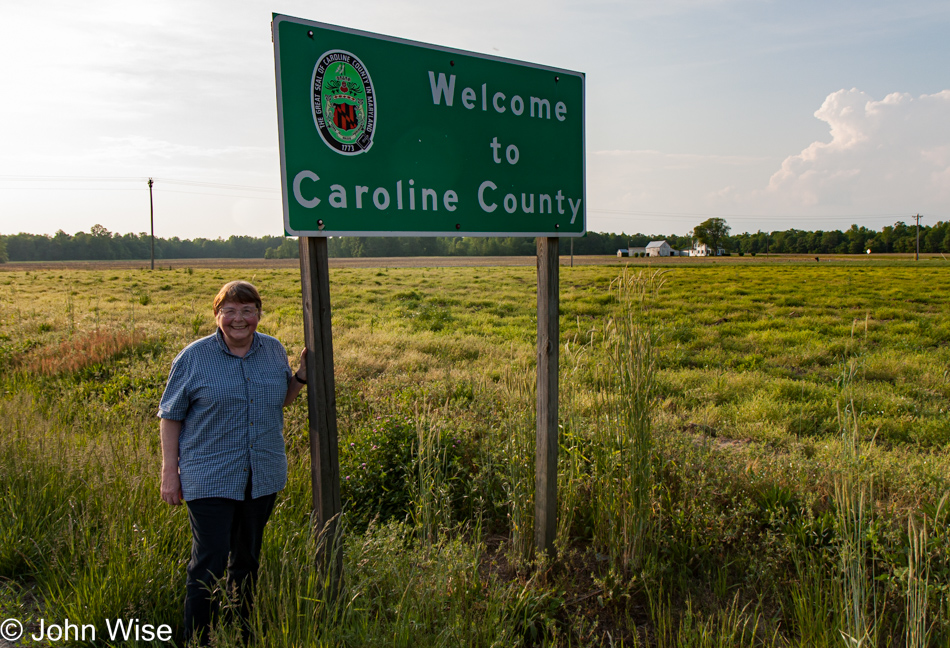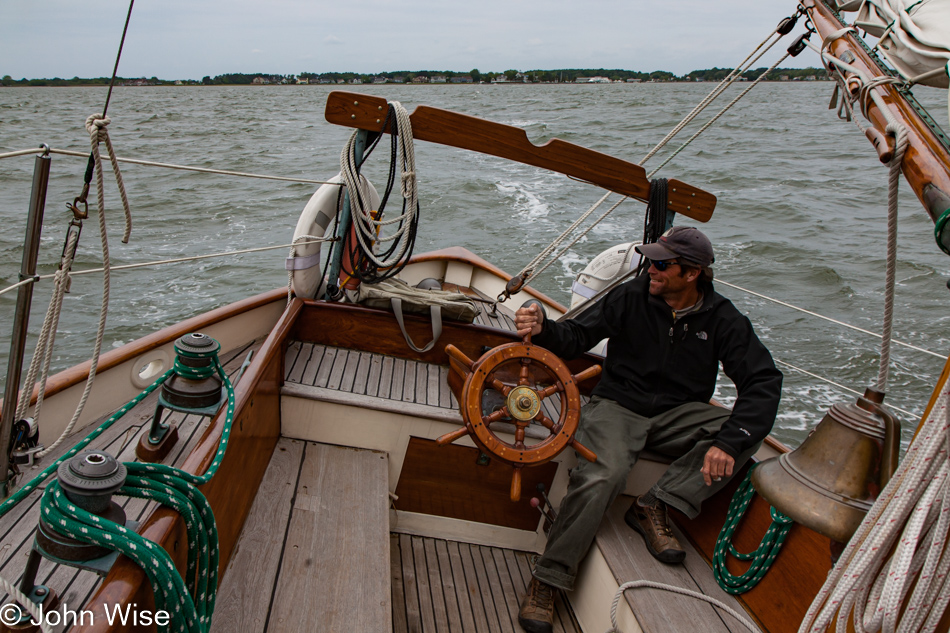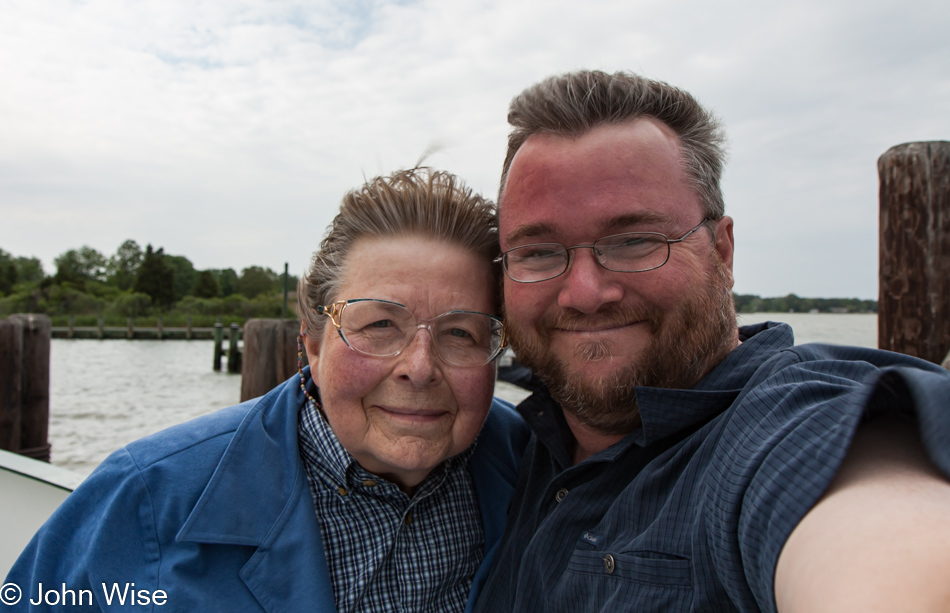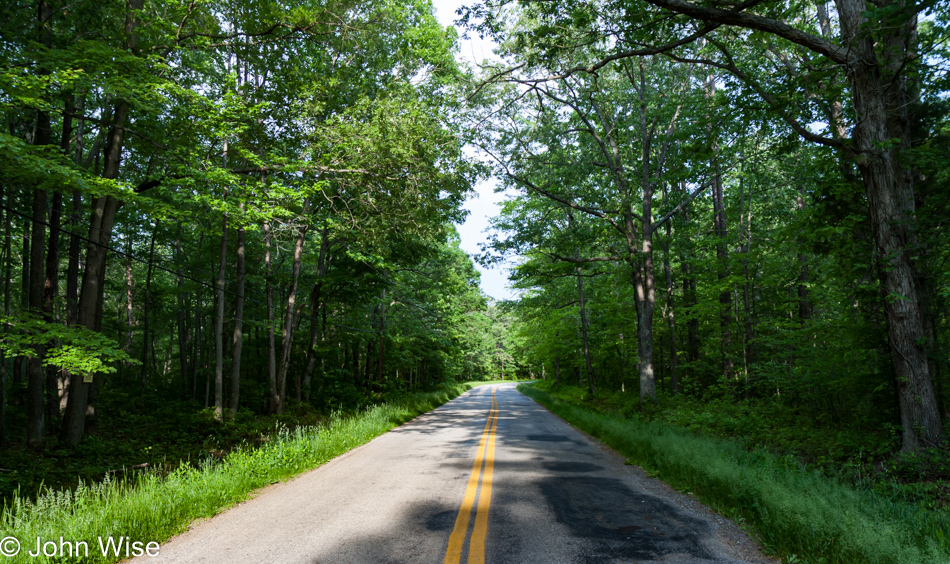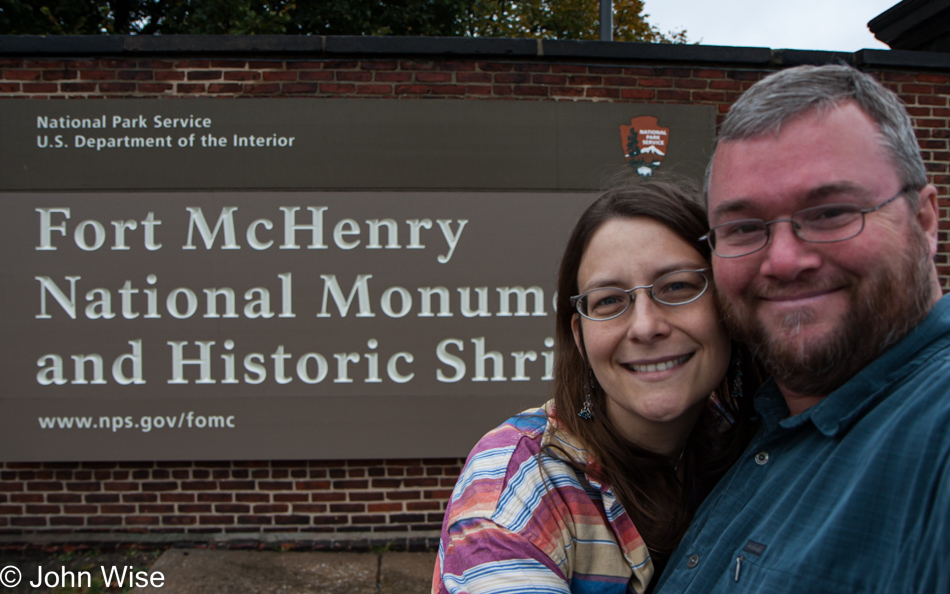
This morning, we visited Fort McHenry here in Baltimore, Maryland.
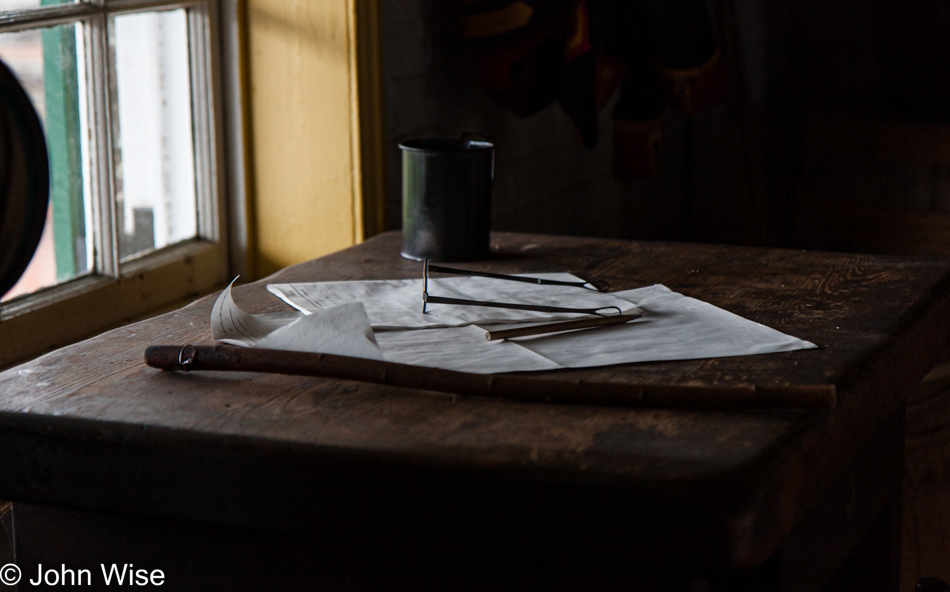
This is the place where the flag known as the Stars & Stripes flew on that fateful night of September 13th, 1814, and inspired Francis Scott Key to pen our national anthem. Visiting the fort was great and, in the historical context of our journeys through America’s history, it wove together seeing the actual flag being restored in the year 2000, seeing it on display this past May, and seeing the house where Mary Young Pickersgill sewed the flag just last month.
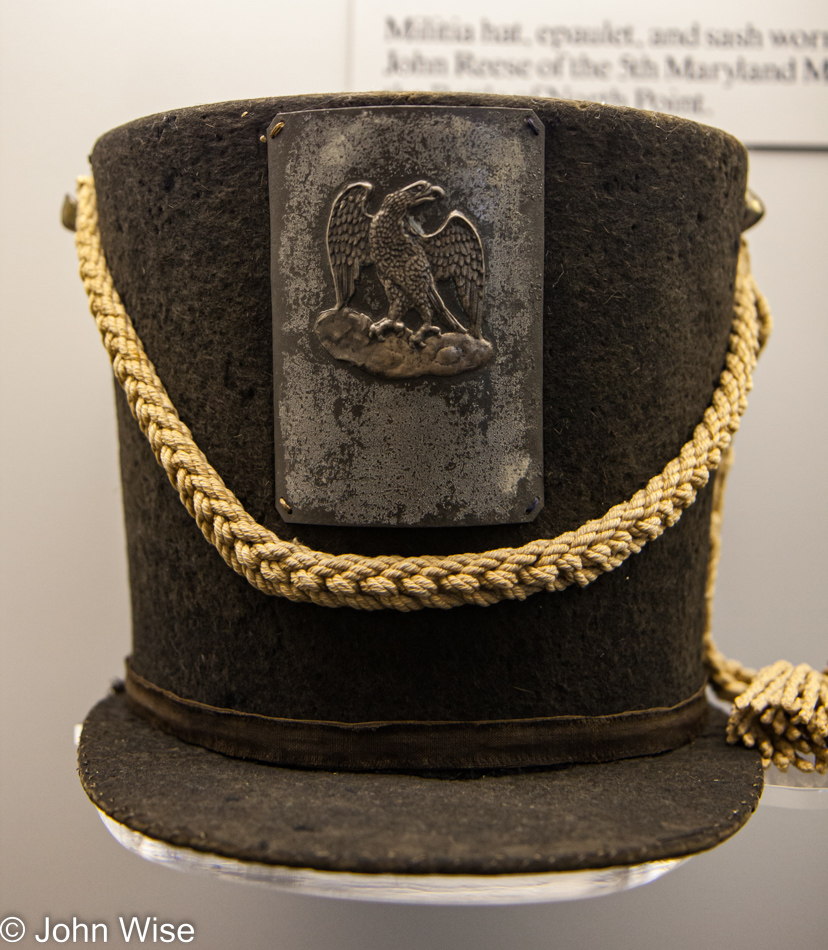
The museum was also of tremendous benefit today as the weather was less than ideal.
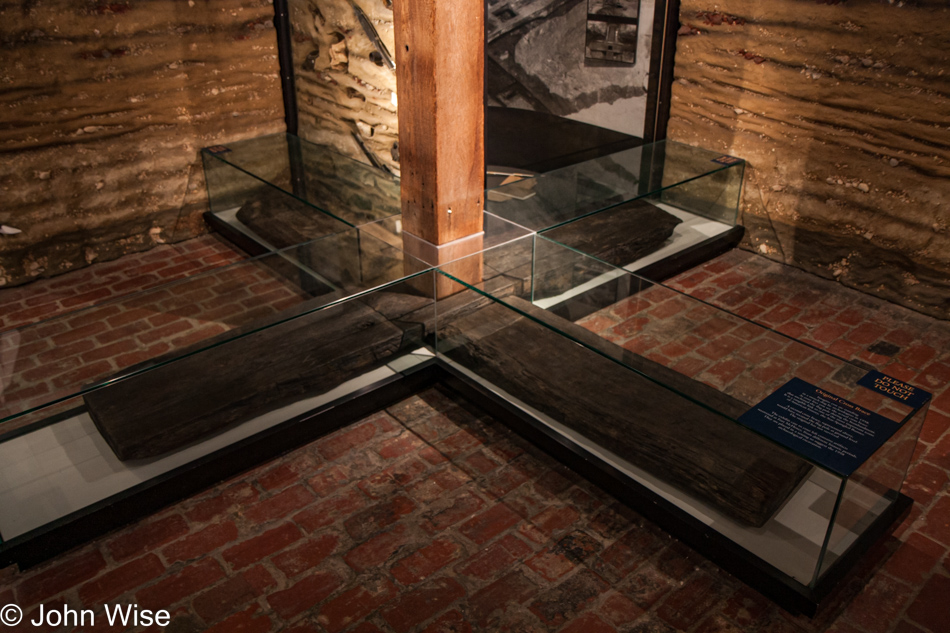
This display requires some explanation as it’s obvious what it is or why it’s here. You are looking at a cross-beam that once supported the flag pole holding the Star Spangled Banner. The pole is long gone and the cross-beam was thought lost as well until it was recovered by archeologists in 1958. By the way, the flag was a massive affair, 30 by 42-foot large, so the pole must have been quite large, too.
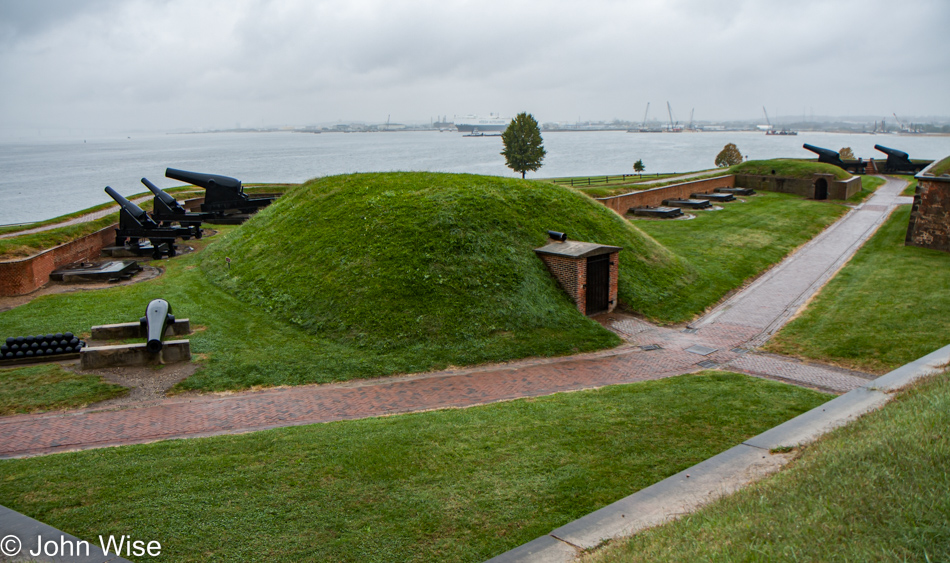
The weather helped expedite us getting out of town; well, that and the fact that we are hungry and have an appointment with an indulgence that we have not yet tried with which we will soon become acquainted.
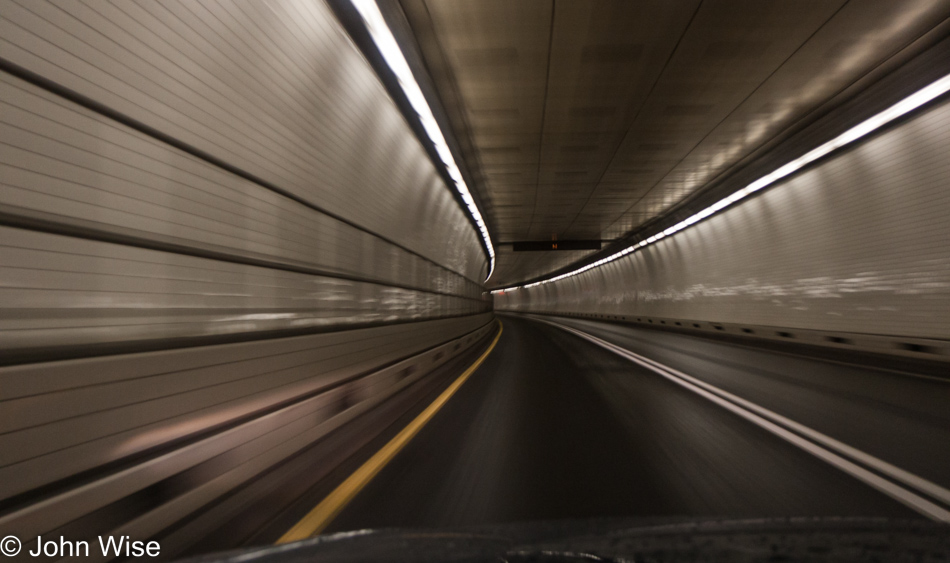
The city we are heading to is barely a shade over 100 miles away and famous for what we’ll be dining on, but can you call it dining? You may have guessed I have great expectations for this cuisine.
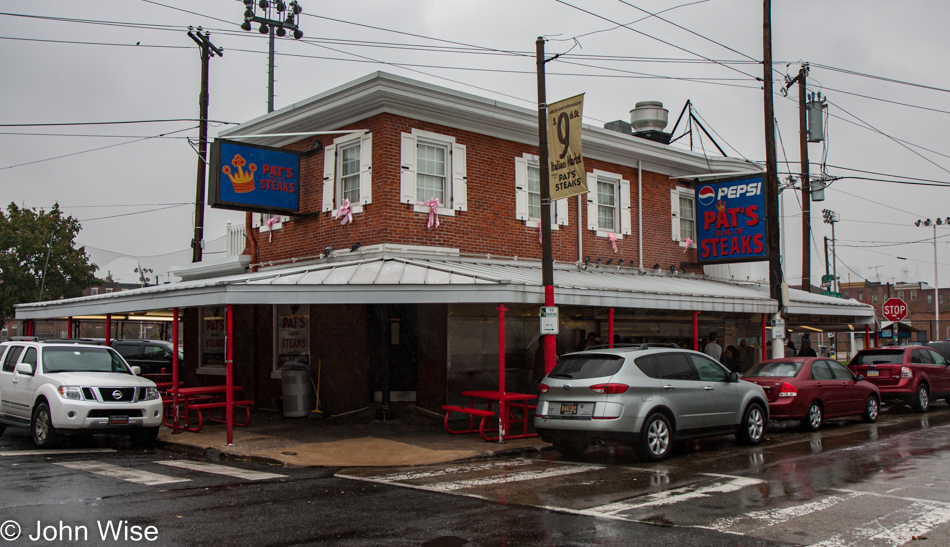
That’s right, the world-famous Philly cheesesteak. Should you be shrieking in the silence of your mind, “No…..not Pat’s.” No sweat; tonight’s dinner will be at Geno’s Steaks.

I think this is an acquired taste, that, or Geno’s, will prove us wrong about the cheesesteak. Two years ago, on the opposite side of Pennsylvania, we had our first encounter with Primanti Bros. and were blown away, but nobody in America is going on about those amazing sandwiches. Can cheese whiz really be that appealing to a class of people in this country who apparently have ZERO taste?
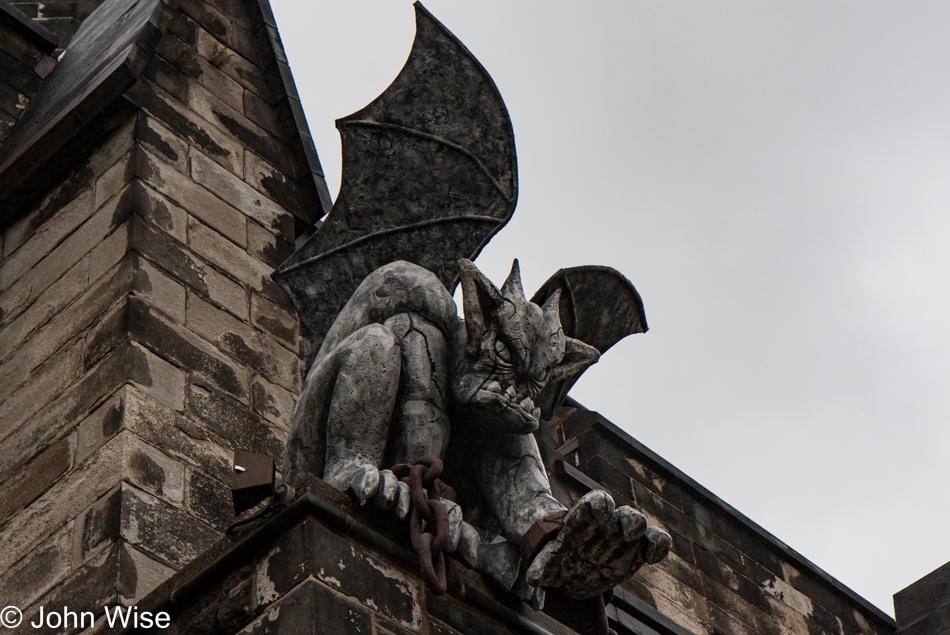
Continuing with our history of the United States theme this year, we are visiting Eastern State Penitentiary, built back in 1829. This National Historic Landmark was the first true penitentiary, and the design of ESP, as it’s also known, became a model for more than 300 prisons worldwide. The gargoyles are a more recent addition; they are a seasonal decoration reminding us that Halloween is nigh.
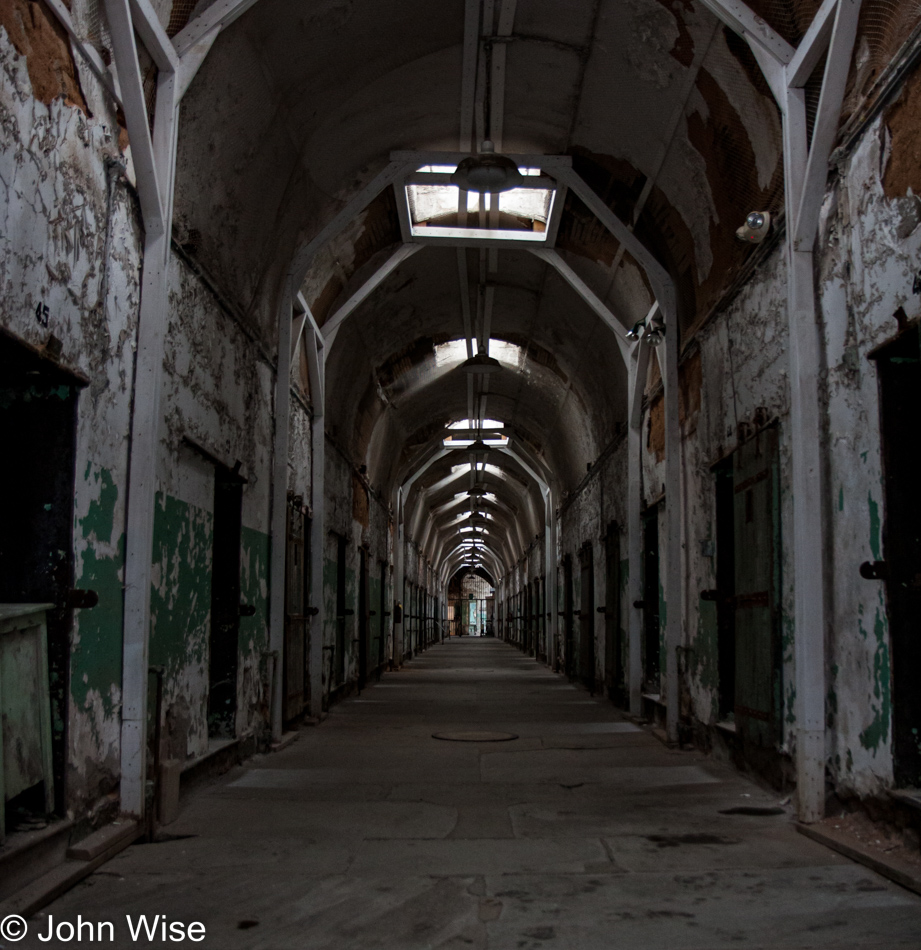
WOW! That was my first impression entering prison in Philadelphia, Pennsylvania; probably not very common, at least among the convicted.
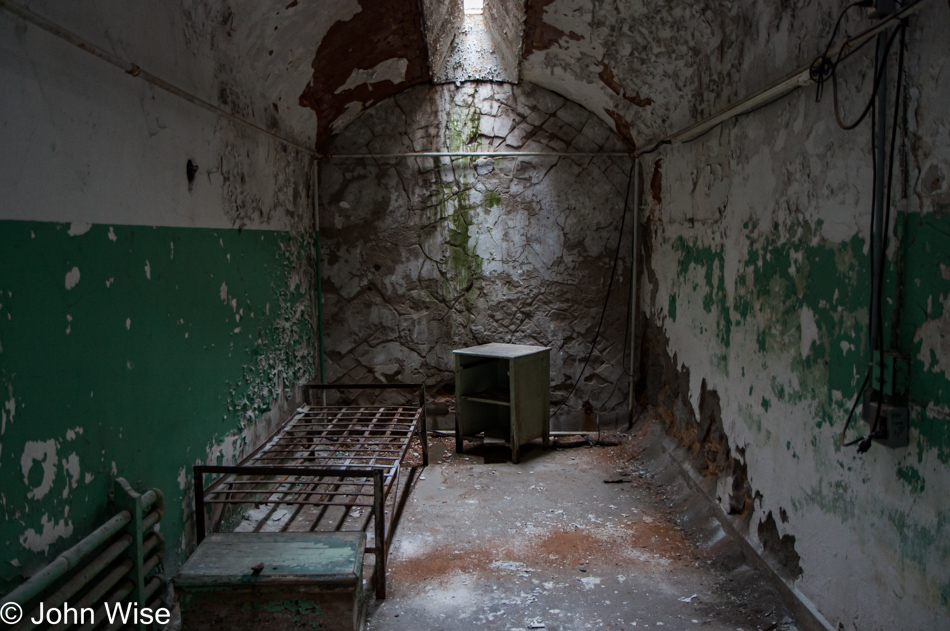
I want to come back already, and we’ve only been here 10 minutes. You walk into a ruin. It is the American equivalent of discovering an Egyptian tomb. The building is being allowed to crumble before your eyes.
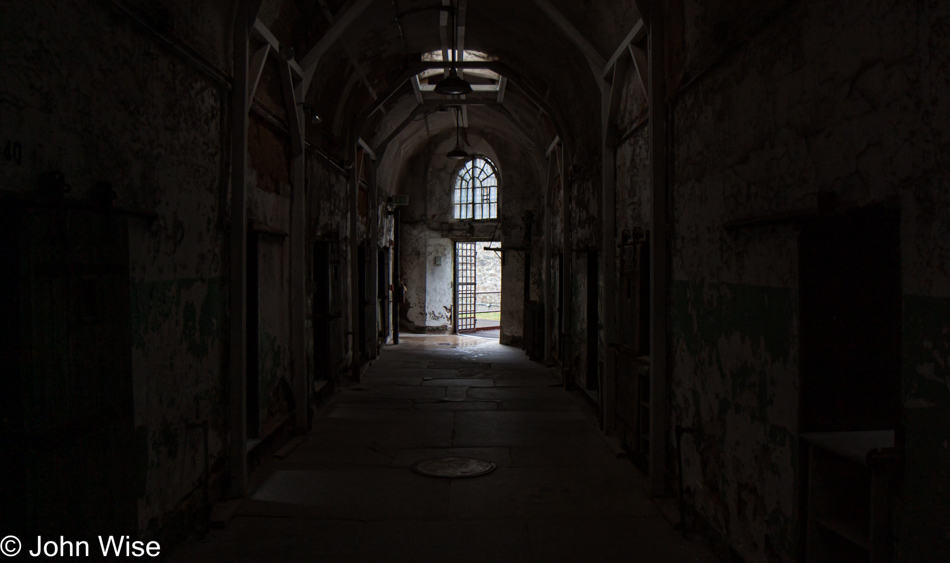
While they try to preserve what is here, they are not restoring the facility. Since 1971, when the prison ceased operations, the structure has been decaying.
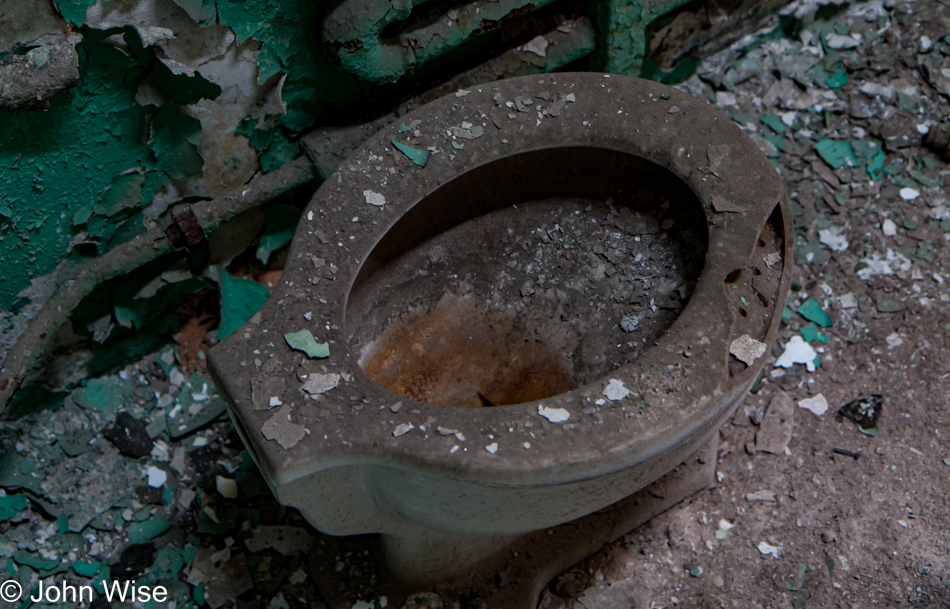
Trees grow in some cells, rust covers everything metal, and plaster is flaking to become fine dust covering everything. The toilets sit unused in corners, and a dungeon-like feeling permeates the rotting core of this place.
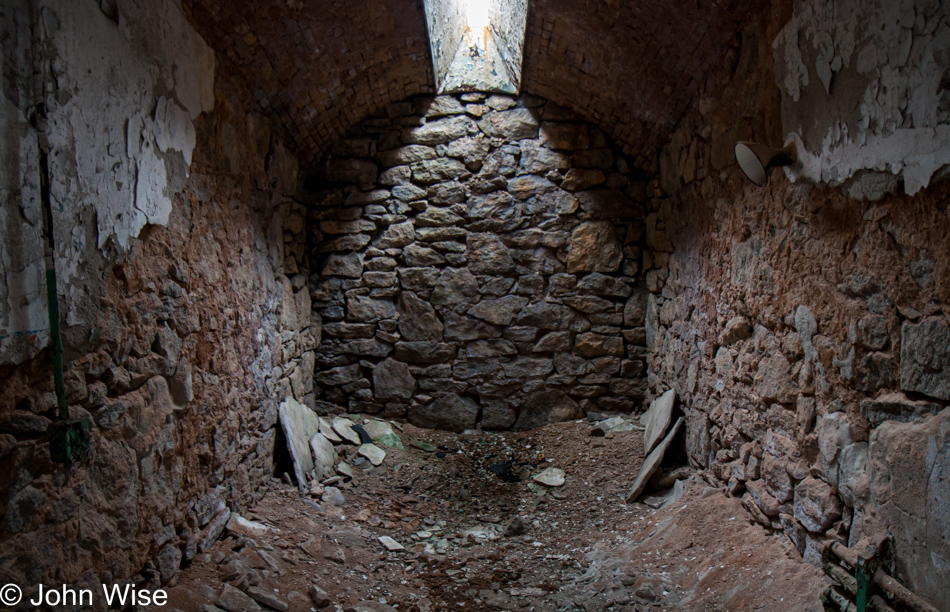
After the initial shock of the rawness, I started trying to see the ghosts of the men who lived and died here. Are we still able to smell the shit, piss, sweat, fear, testosterone, and desperation that once permeated these cells?
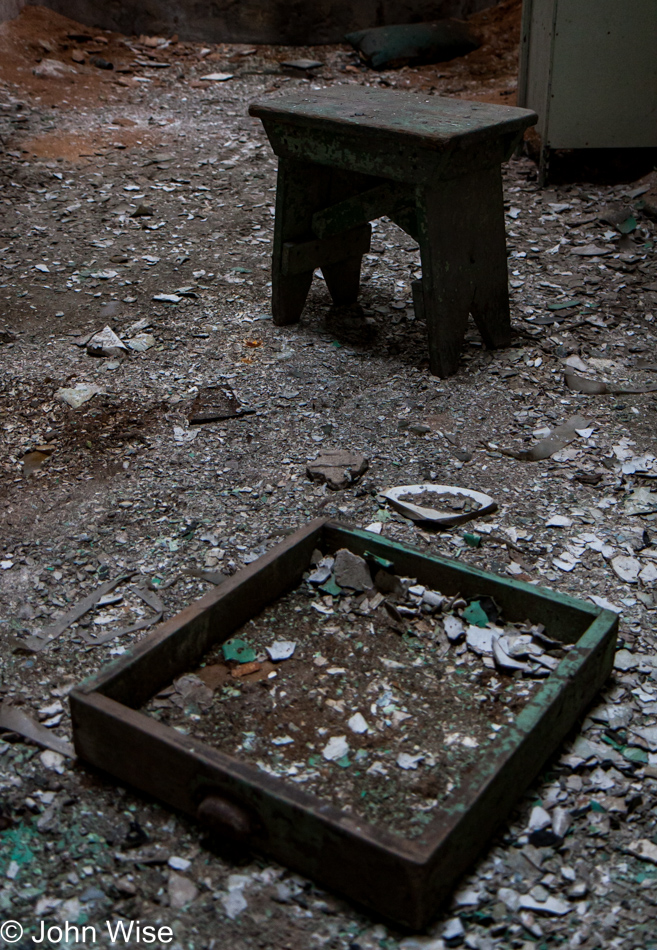
Maybe at one time, a man, falsely convicted, sat in that chair, pulled out the drawer to take paper and pencil (were they even allowed?) to write a loved one about his life in the oldest penitentiary in America and how everything was slipping away from him. Like the building, he grew older, fearing the walls around him would last longer than he ever could. Should a story such as this exist, the prison has an archive of “alumni” get-togethers that recorded what time was like within these now silent walls. We didn’t take advantage of this program as I was too distracted/enchanted by what I was seeing.
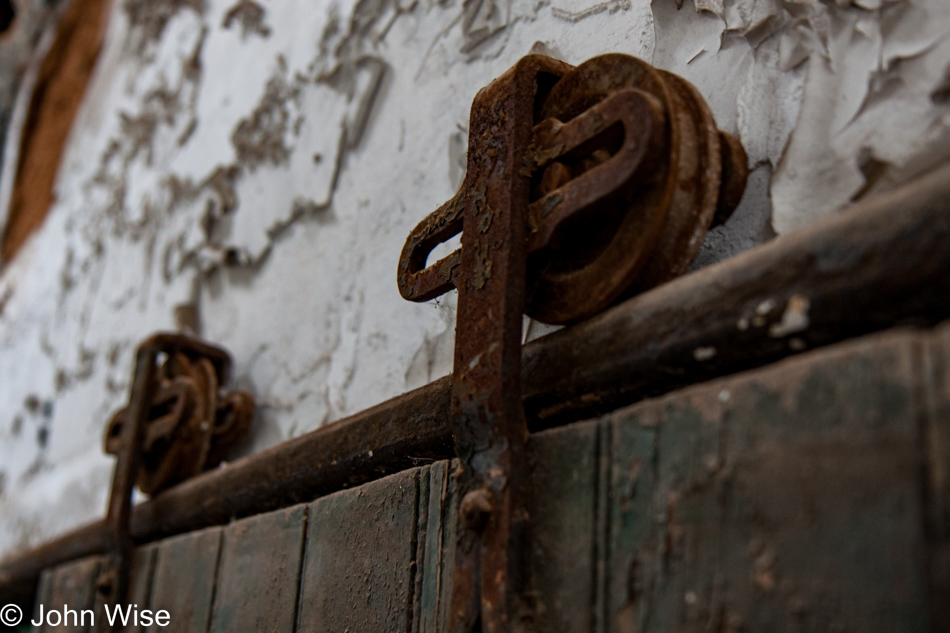
A farmer convicted of theft became prisoner #1; he was Charles Williams and served two years here. He entered the prison hooded so as not to be able to see a way out. After he was locked behind a door, that’s where he lived in solitary confinement.
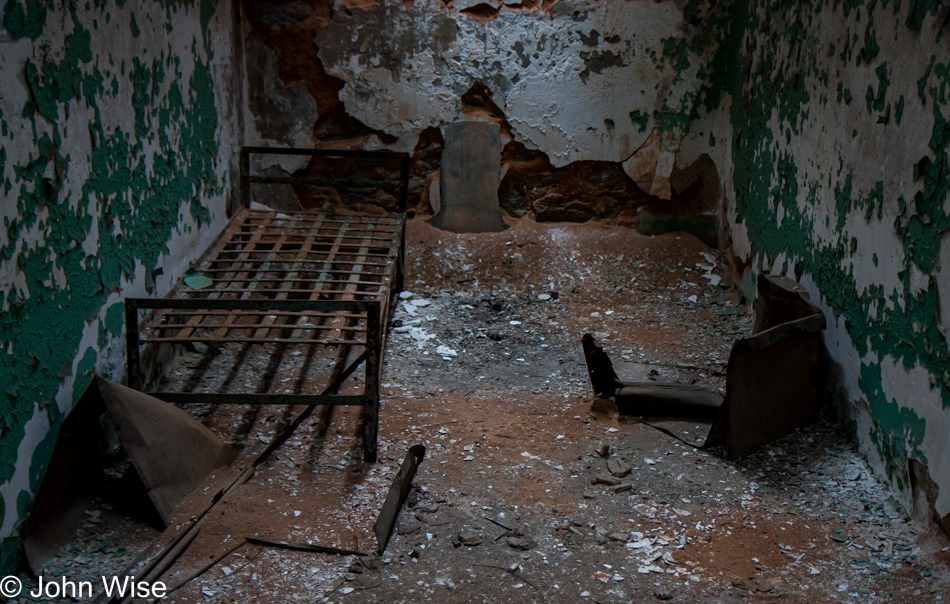
Times changed; guards, administrators, and prisoners would come and go, but the cold walls that contained a man’s soul never budged. For 142 years, this very cell saw possibly dozens of men live in this small windowless space or maybe only a handful if their sentences were long enough.
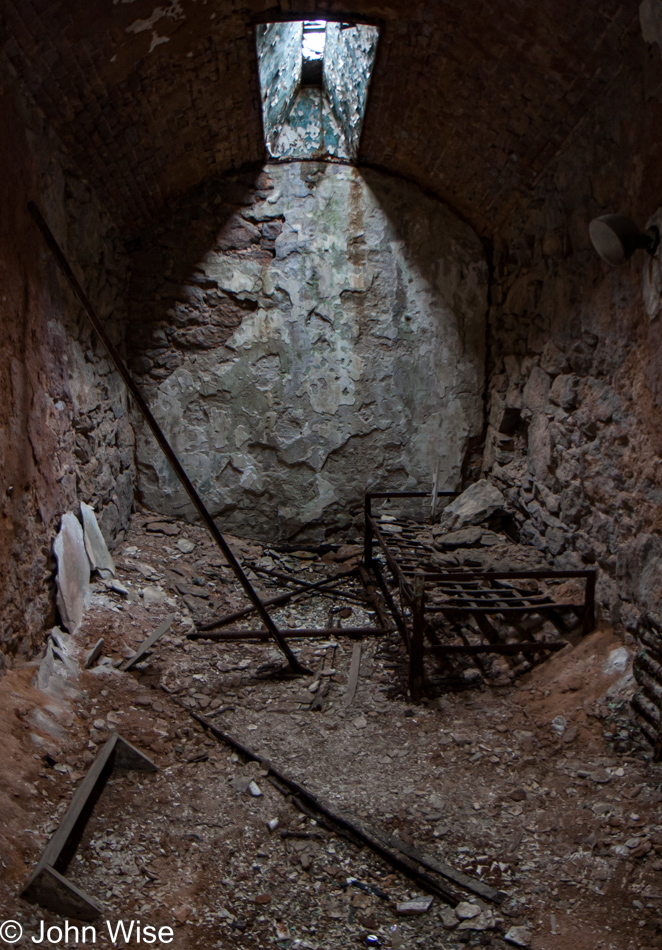
That slot in the ceiling was the prisoner’s only source of natural light. I wonder how far the mind travels when the body is confined in such a small space and its eyes gather hints of a past that have no more reference points? What is there of the inner dialogue of a person when there is nothing left aside from looking at the same walls, door, and two hands that no longer have a purpose beyond feeding and cleaning oneself?
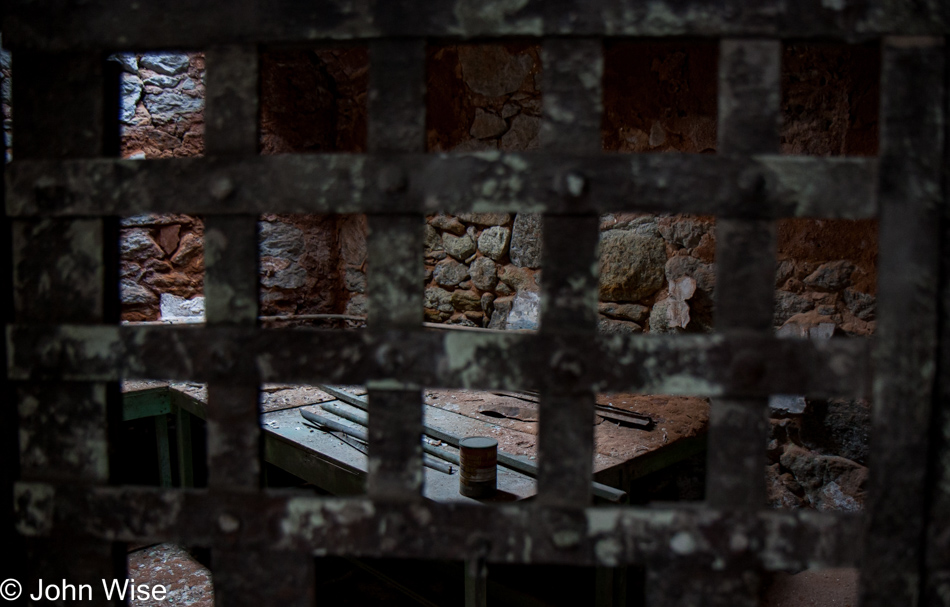
This is a dungeon where the violence of the offender destroys himself, and the torture of the guards ensures there is no relief from the pressure of isolation that works at removing one’s last vestiges of humanity – if, in fact, they even entered this prison with any.
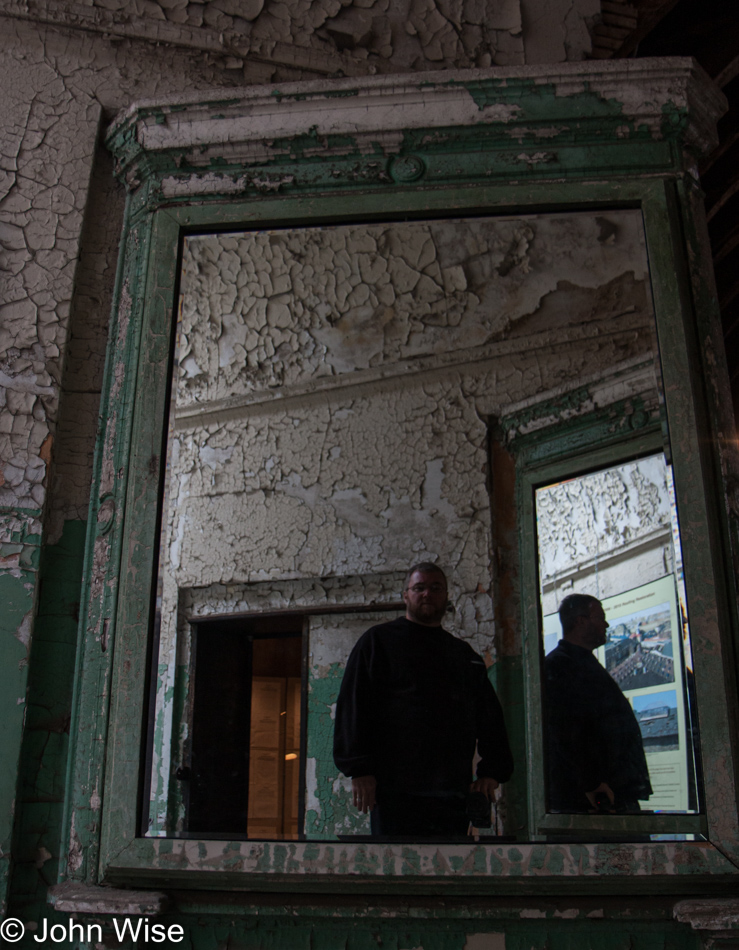
The shadows of men still exist here, or how else does that thing that never had substance in the first place, that merely passes over the surface of things, ever really go away, and where to? After the physical form of the man who might one day leave his incarceration, recognize himself in the mirror? Is the man in the mirror in any way even reflective of who he once was, or has his inner being already looked so far away that it can never again see where it might have gone?
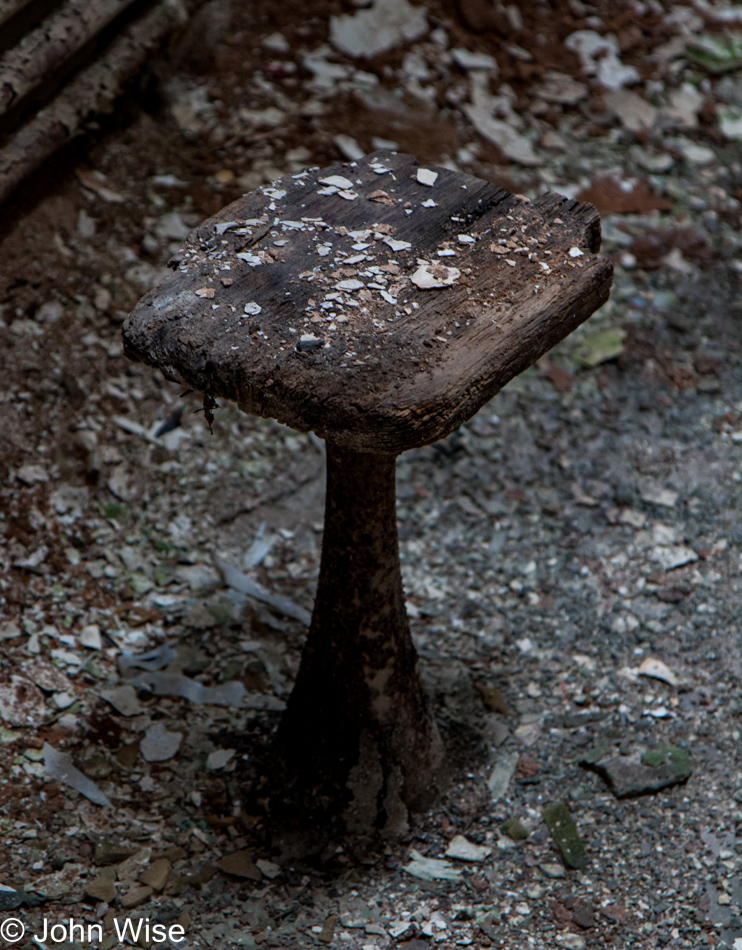
When the day comes that you are no longer at your favorite spot when your shadow fades and the mirror is empty, what will remain? Dust is all there will be, and that too will one day be gone just as the thickest of walls and hardest of stones crumble and return to earth. The only thing that remains of humans beyond our physical existence is the memories others might carry of us and, in a few rare instances, the impact we might have made on music, art, or words.
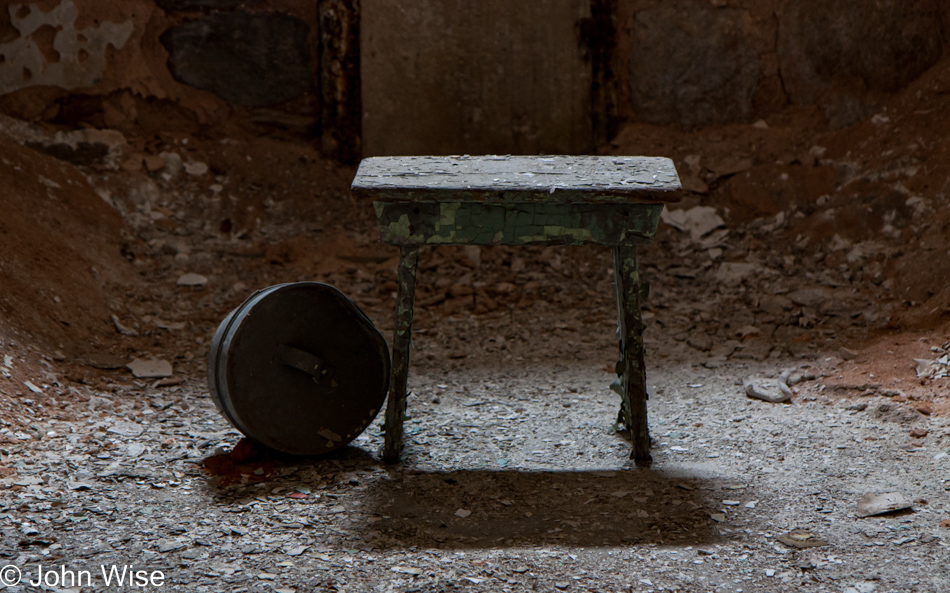
This penitentiary was built to house 300 men, but at one point, there were close to 2,000 unfortunate men stuffed within and underneath this prison. As demands for incarceration grew, authorities built cells below these grim rooms in order to literally bring people into a dungeon of dark, damp despair. Those fortunate enough to have a slot over their heads allowing at least a small amount of sunshine to offer them hope of return would be lost on the beasts dwelling in the cellar below. Visitors are not offered the opportunity to witness those chambers, either due to dangerous conditions or from the danger to their psyches, knowing that we are capable of such cruelty to our fellow man. We do not thrive in the dark; we grow in the illumination of both the day and the mind.
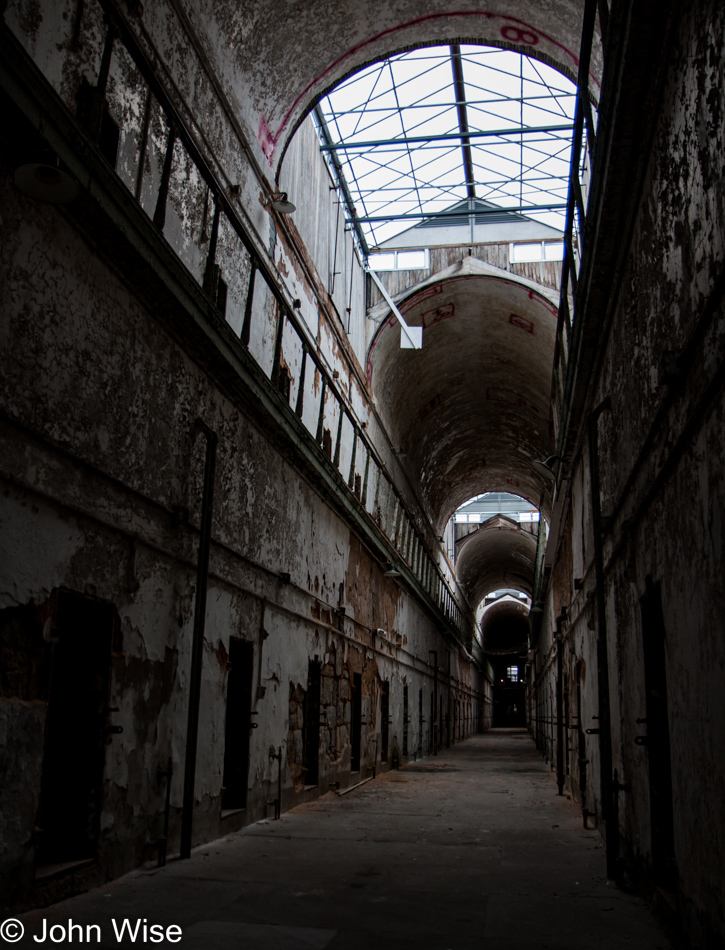
Some 75,000 people across time knew what it meant to live in such a place; none were aspiring monks on a chosen path of practicing asceticism in order to find enlightenment, philosophical guidance, or new paths. This was not a monastery where men came to meditate; on the contrary, they were on paths of fulminating on greater self-destruction and harm to others.
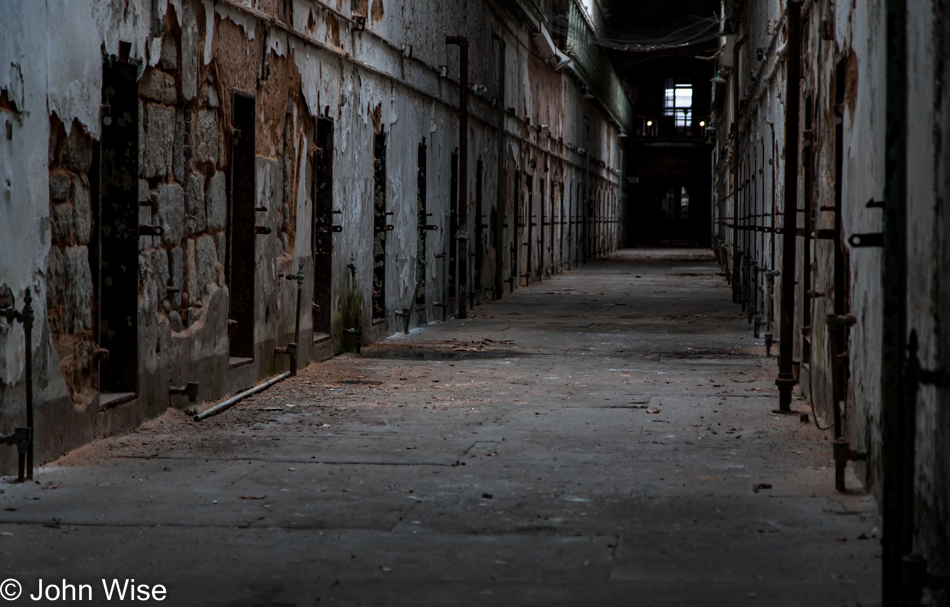
To this day, our system of incarceration is not about saving souls or the hearts of men; it is meant to mold broken men into violent beasts that are used as exemplars of what our system of government is saving us from. The father/child relationship of the adult protecting the child is then probably the right form of conservatorship handed to the wealthy by their god to watch over the masses.
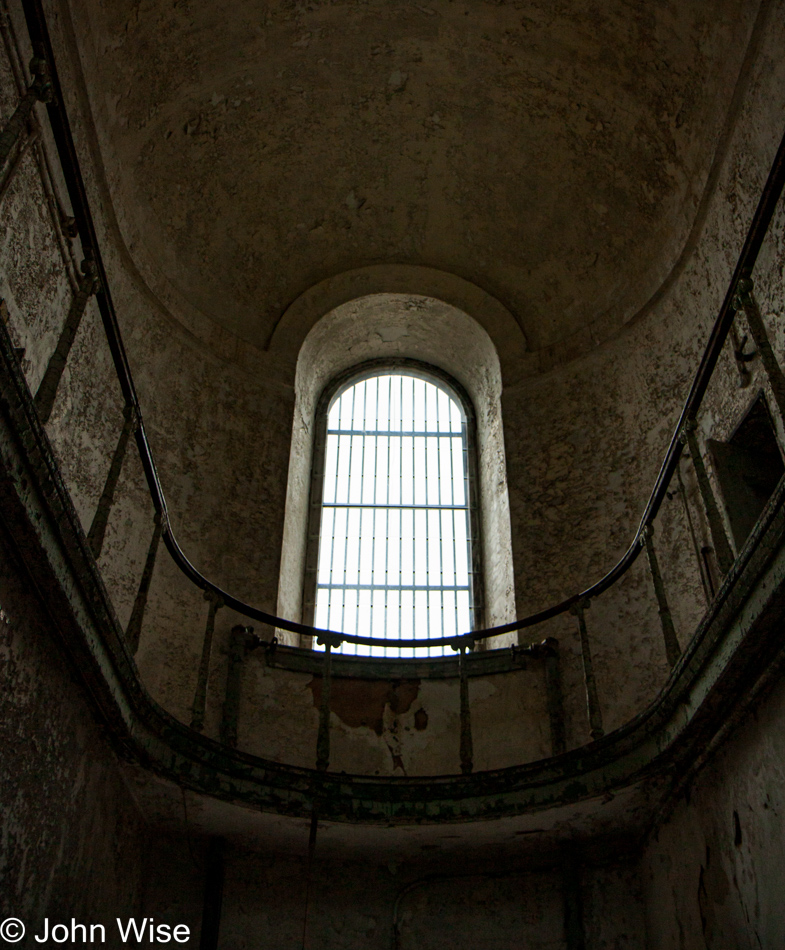
Charles Dickens wrote in his travel journal, American Notes for General Circulation, “In its intention, I am well convinced that it is kind, humane, and meant for reformation; but I am persuaded that those who designed this system of Prison Discipline, and those benevolent gentlemen who carry it into execution, do not know what it is that they are doing. I hold this slow and daily tampering with the mysteries of the brain to be immeasurably worse than any torture of the body, and because its ghastly signs and tokens are not so palpable to the eye,…and it extorts few cries that human ears can hear; therefore I the more denounce it, as a secret punishment in which slumbering humanity is not roused up to stay.”
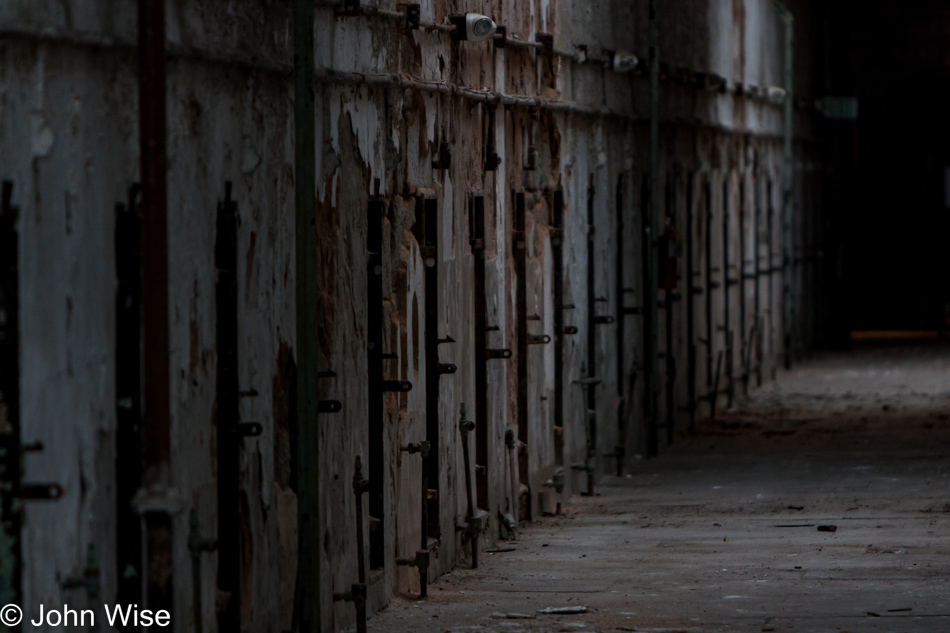
In those cells resounded the cries of the unheard, unseen victims wrought by abuse and neglect.
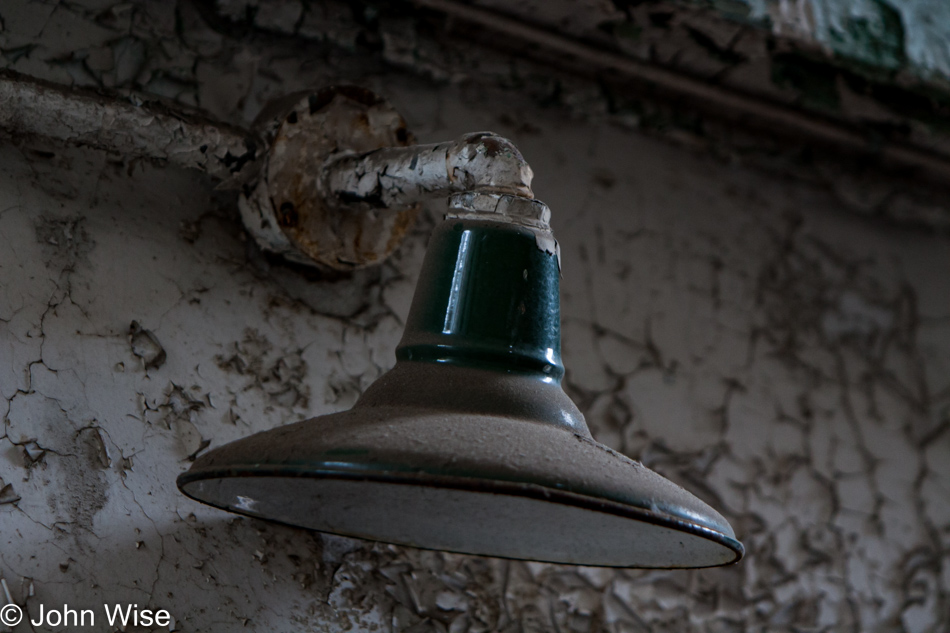
Here we are in modernity, and still, we cannot light the way of those destined to maybe not live within these walls but in some new prison that we desperately want to believe has moved away from a blueprint that destroyed lives. The idea that those who transgress others should be cast into the shadows of further abuse is a form of self-harm, especially coming from people who claim Christian superiority.
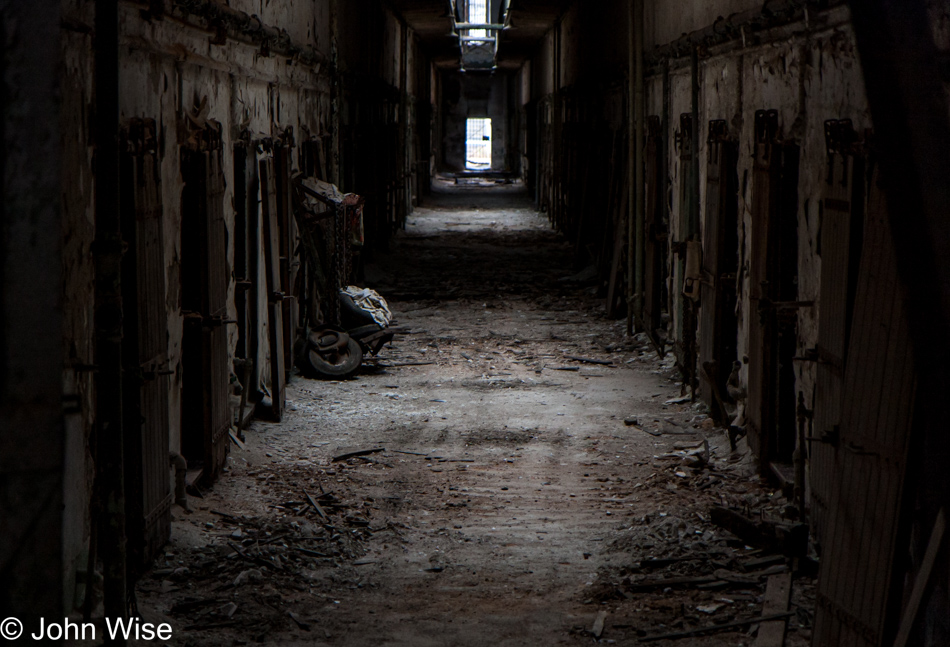
So many photos of similar scenes were chosen for this post I had the hardest time excluding the 20-odd images that didn’t make it onto this page. Nature has a way of healing itself; what man makes only decays and falls to ruin. We do not make nature; we destroy it.
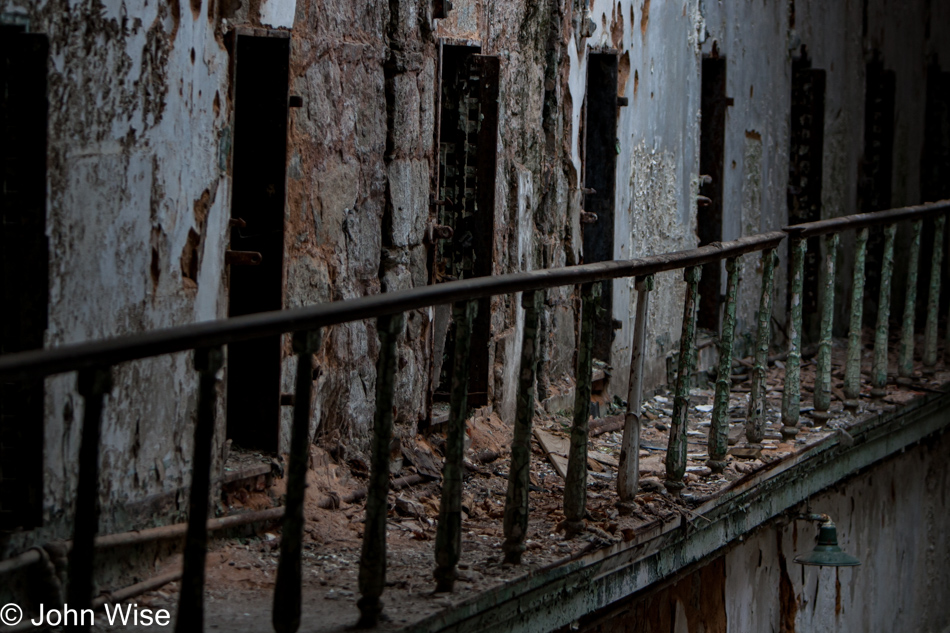
We make life but ultimately harm it. If we lived the Christian ideals we profess to have, we would be a very different society with a rich culture instead of one full of fear and anger.
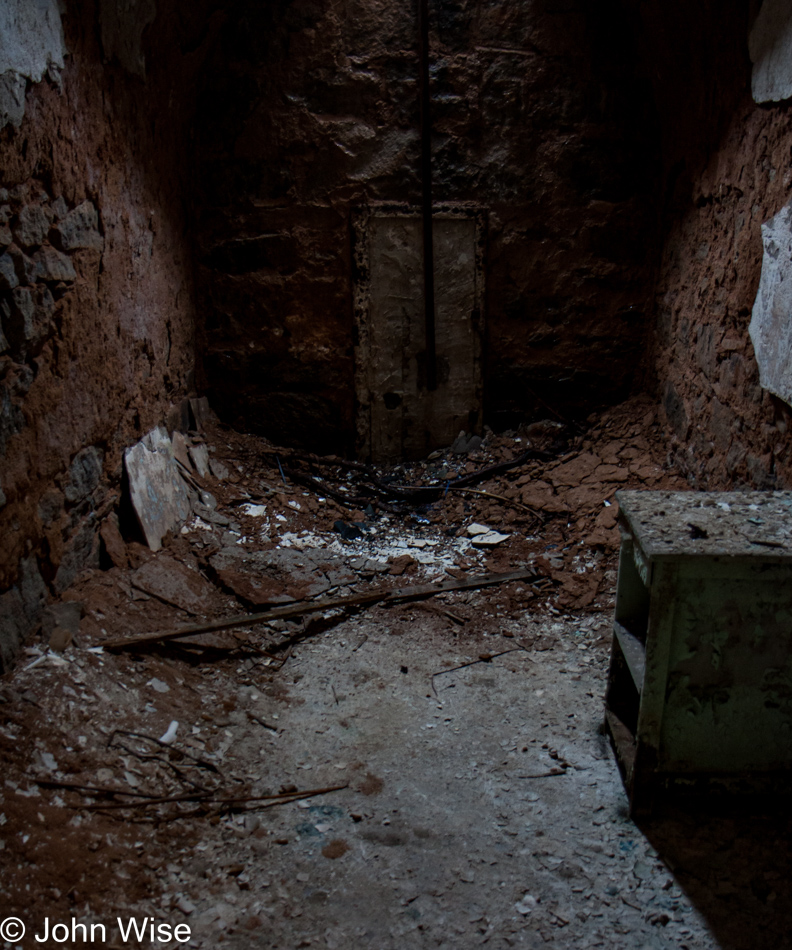
This is where dreams go to die; it is a cemetery of lost and forgotten aspirations we refuse to acknowledge ever existed. This place is a reflection of the American soul.
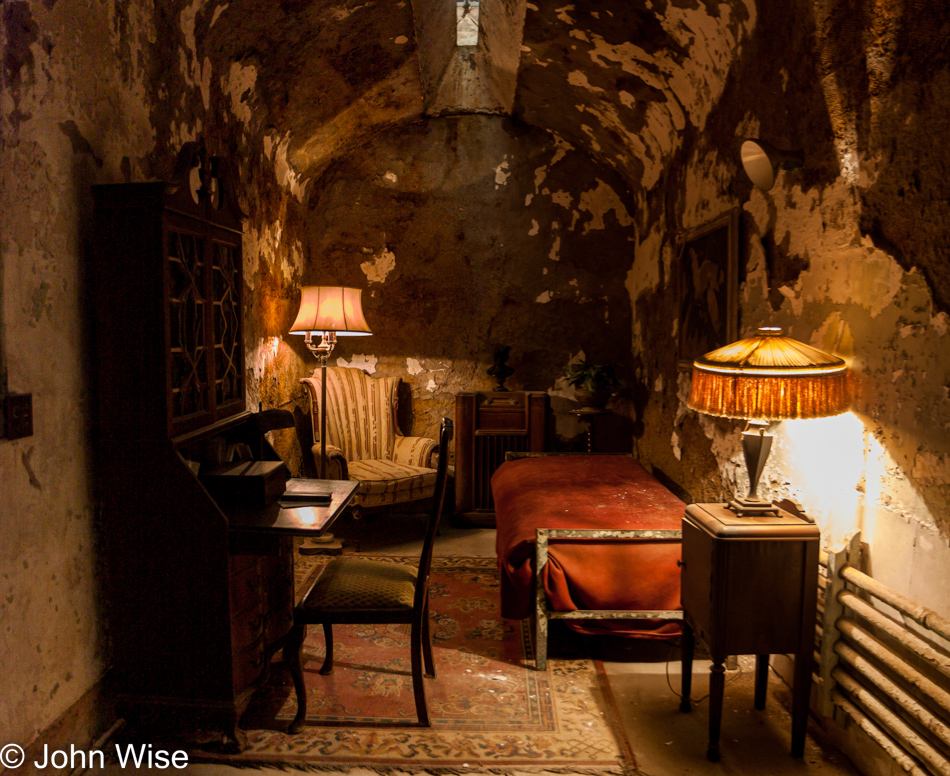
And because this was the cell of our beloved Al “Scarface” Capone, we can celebrate this gangster, murderer, racketeer, pimp, tax cheat, and bootlegger by keeping his place of incarceration alive as a kind of homey room with warm lighting and obvious privilege because America is nothing if not a place to celebrate its villains through the lens of a kind of hero worship.
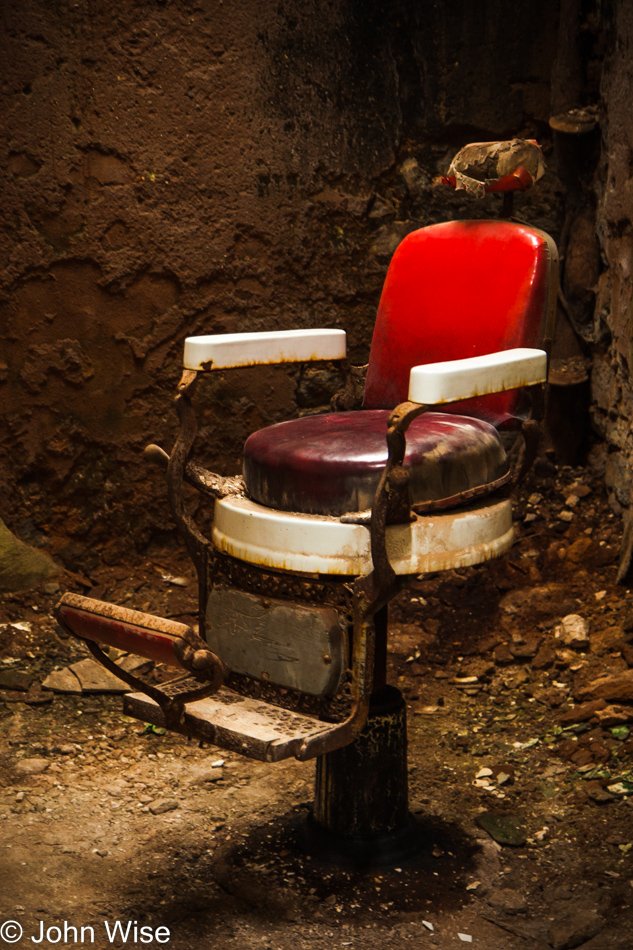
I’d pay dearly to have my hair cut here as the people who once sat here were probably a lot more authentic than those who occupied the chair at my barbershop in Scottsdale, Arizona.
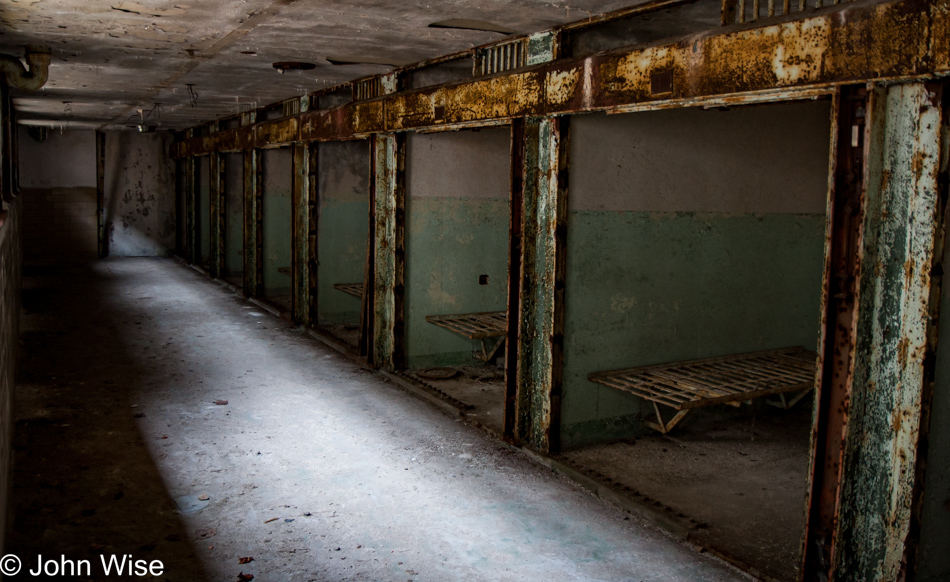
While I have had the opportunity to visit the Parthenon in Athens, Versailles Palace in Paris, countless castles, the White House, the U.S. Capitol, and Walpi on the Hopi Reservation in northern Arizona, Eastern State Penitentiary stands out as one of the must-see buildings that pack a wallop of historical intrigue onto your senses. I leave you with this image of what remains of death row.
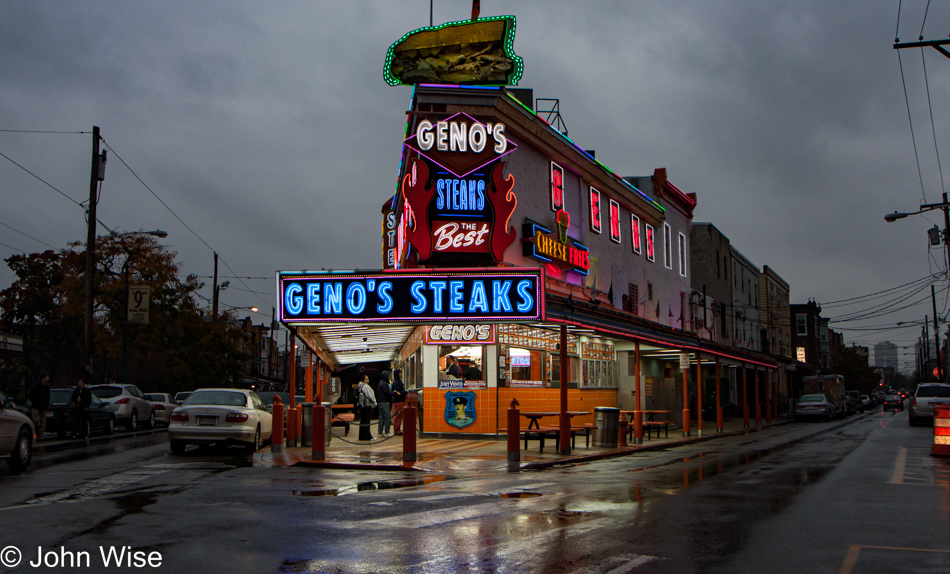
I’m happy to say that we did not dine on the antidote to the sobering experience of having been “in prison.” I say that I’m happy to share that because eating at Geno’s Steaks was a fitting end to the grim environment of Eastern State Penitentiary. Sometimes, maintaining pain and anguish in order to learn something allows the lesson to resonate deeper and longer, and the culinary excuse made by those who claim to enjoy this Philly phenomenon of the vaunted cheesesteak can only be explained by the idea that they exist in a food penitentiary where the light of real cuisine is out of sight. Gack.

